For our class Hypercinema we had to create an interactive animated experience in AR.
We decided to do a little experimentation and wanted to create a pop-up book of surreal worlds that came to life via AR. Around the time we started this project was when AI image generative tools like Midjourney and DALL-E were released and gaining popularity, so we thought, why not leave the imagery to those tools and use its creations as inspirations for the animation work?
So first we have to decide what type of papercraft best contrasts the new-age technology of AR but is still achievable with our skillsets?
Choosing a form factor
Because we had several options for each of our scenes, we wanted papercraft options that allowed for several scenes. Thus we thought of…

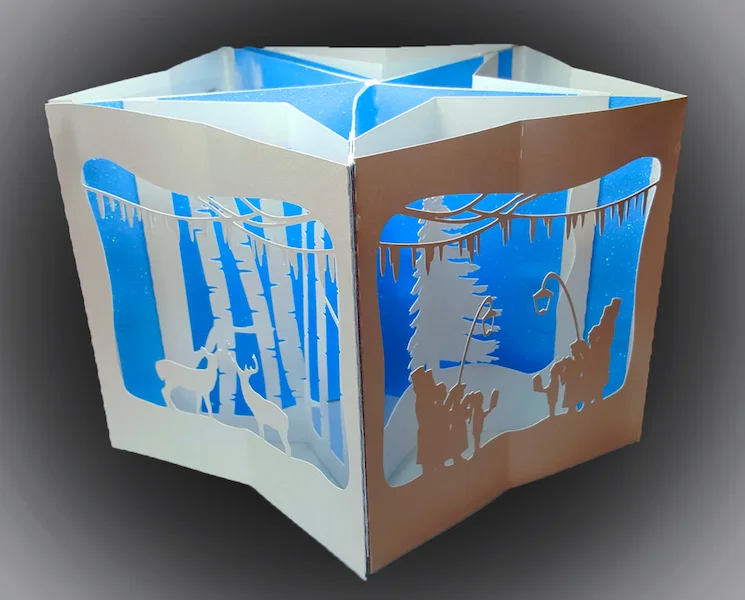
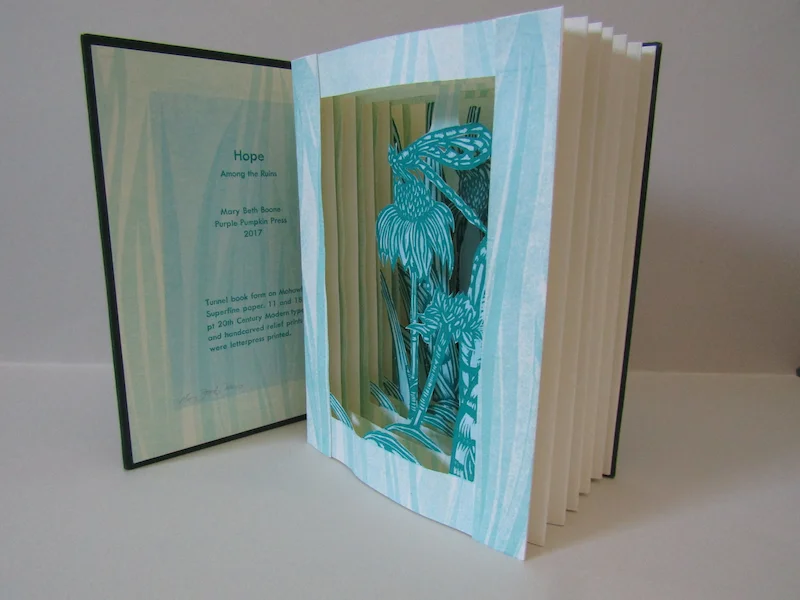
- Pop-up Book. Pop-up books are a childhood favorite. Each scene could be a different spread of two pages. The only problem? They’re very hard to architect and none of us had ever made one before.
- Carousel Book. During our search, we ran into carousel books, which we thought looked perfect! Though, after talking to our professor, Marianne, we found out these were also very hard to architect because of the angles involved between each of the points of the star.
- Tunnel Book. Marianne suggested a tunnel book. These were getting closer to what we needed, but one thing we were concerned about with tunnel books is because of its accordion like structure, the layers aren’t always a predetermined distance apart. We were worried that this might make it more difficult to “map” the layers in AR.
Winning Idea: Paper Theater
Ding ding ding! We have a winner!
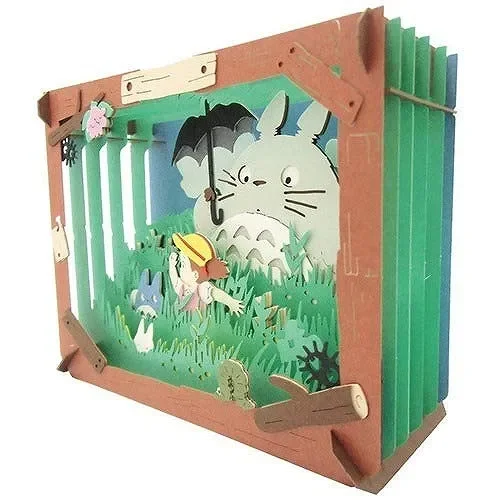
A paper theater has all the simplicity and effect a tunnel book does, but with rigid layers are separated via spacers and are consistently the same distance apart. It makes it less collapsible, but it fit our need nicely.
Scoping down
The original plan included different AI interpretations of 3 surreal landscapes: Forest, Ocean, and Desert.
Given our time constraints, we needed to scope down. We went from 8 scenes to 5, to 3, to 2. We stuck with a day and night vision of a surreal desert biome.
Here are some of the assets for the scenes we descoped. I largely focused on creating backgrounds using Midjourney as a base and DALL-E's outpainting tool, while Jess and Alfonsette focused more on the creatures and props:
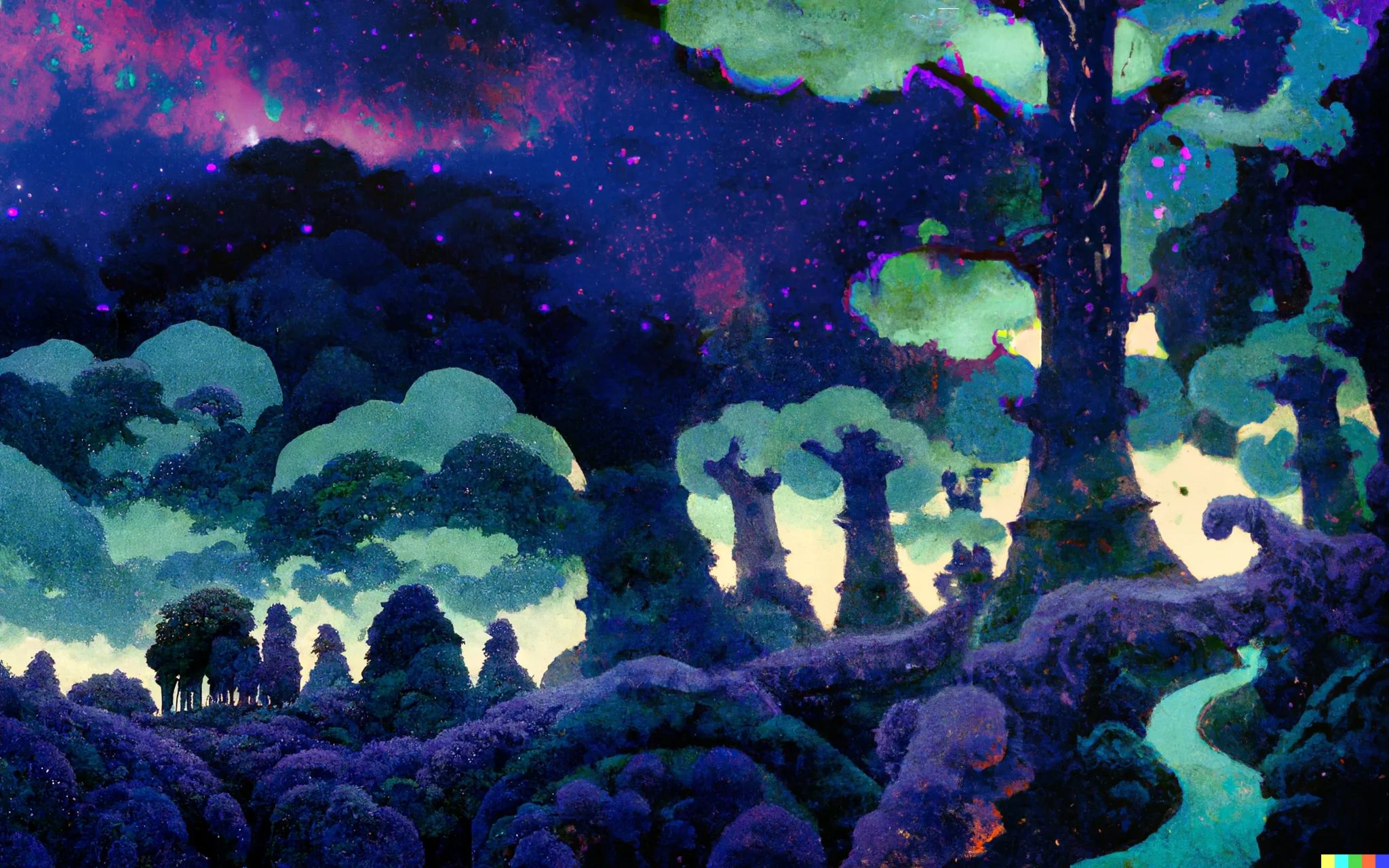
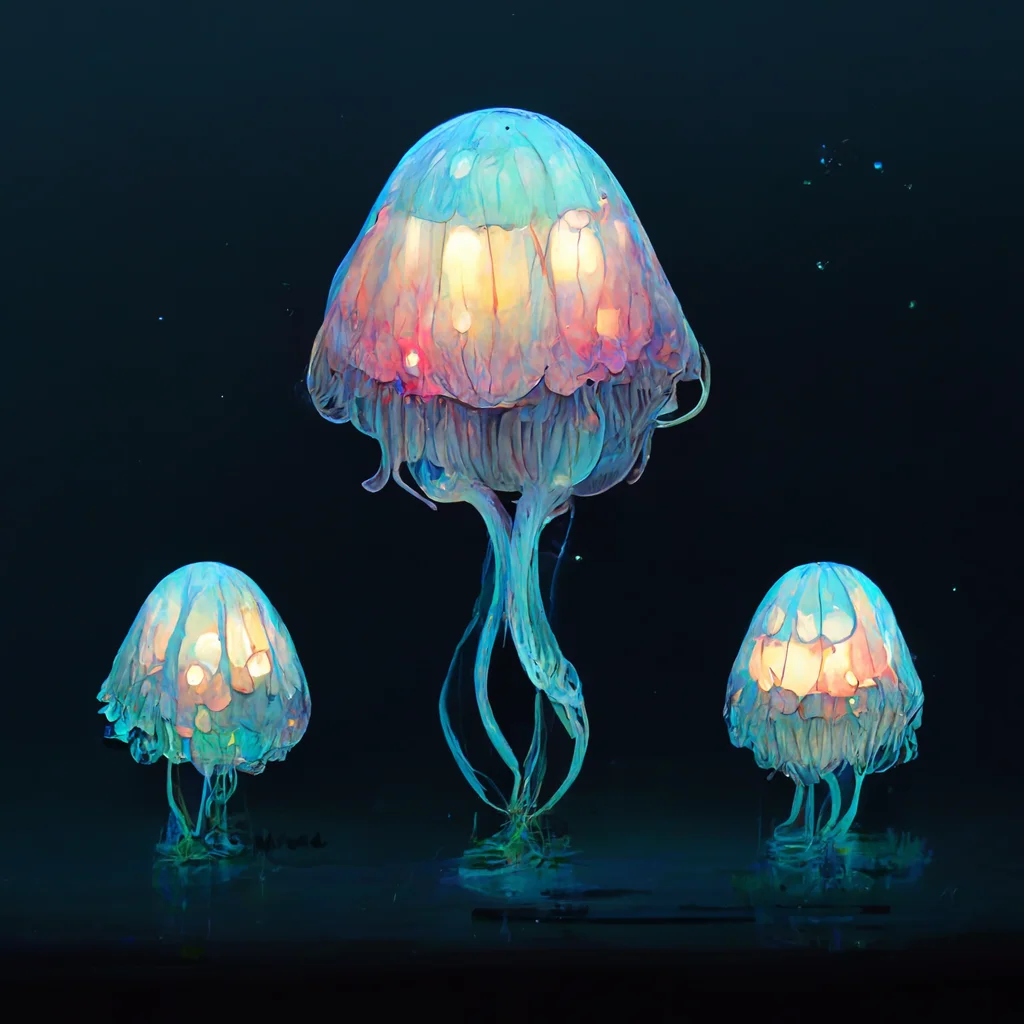
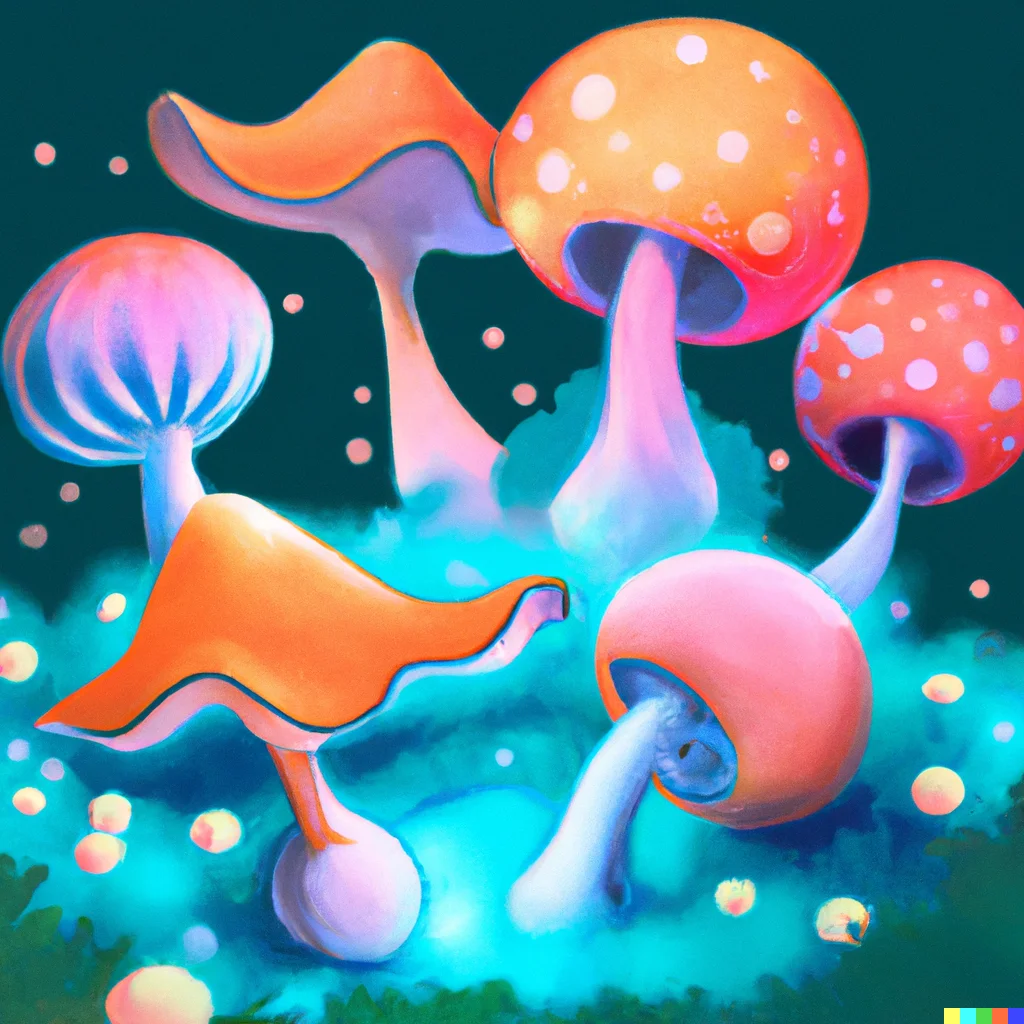

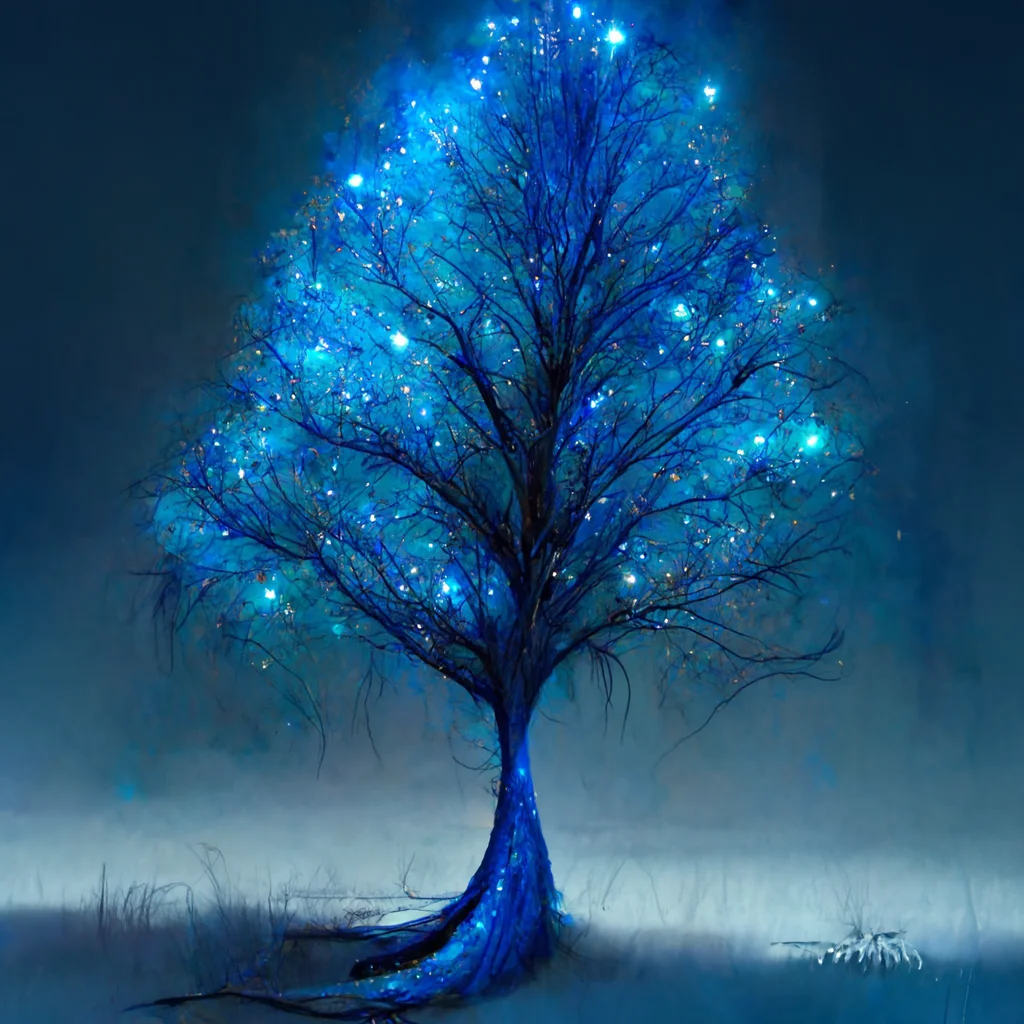
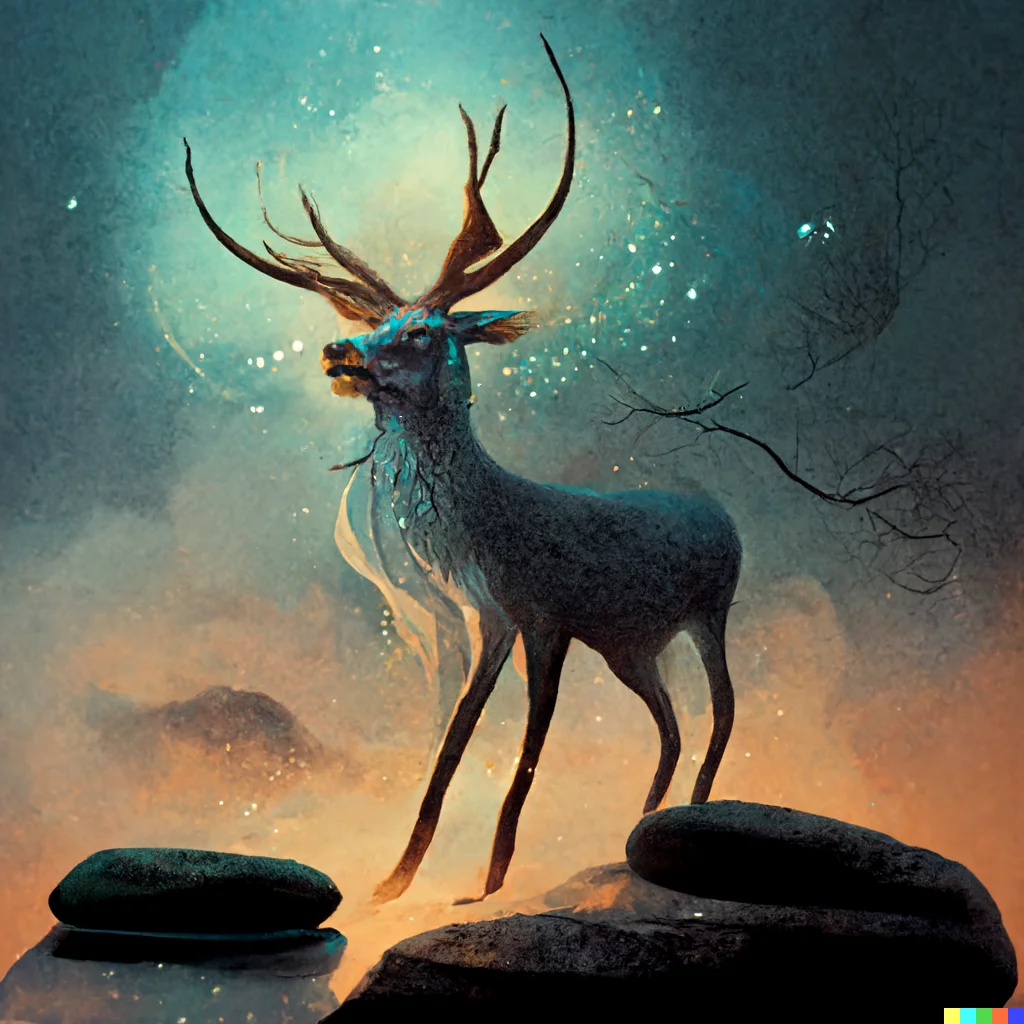
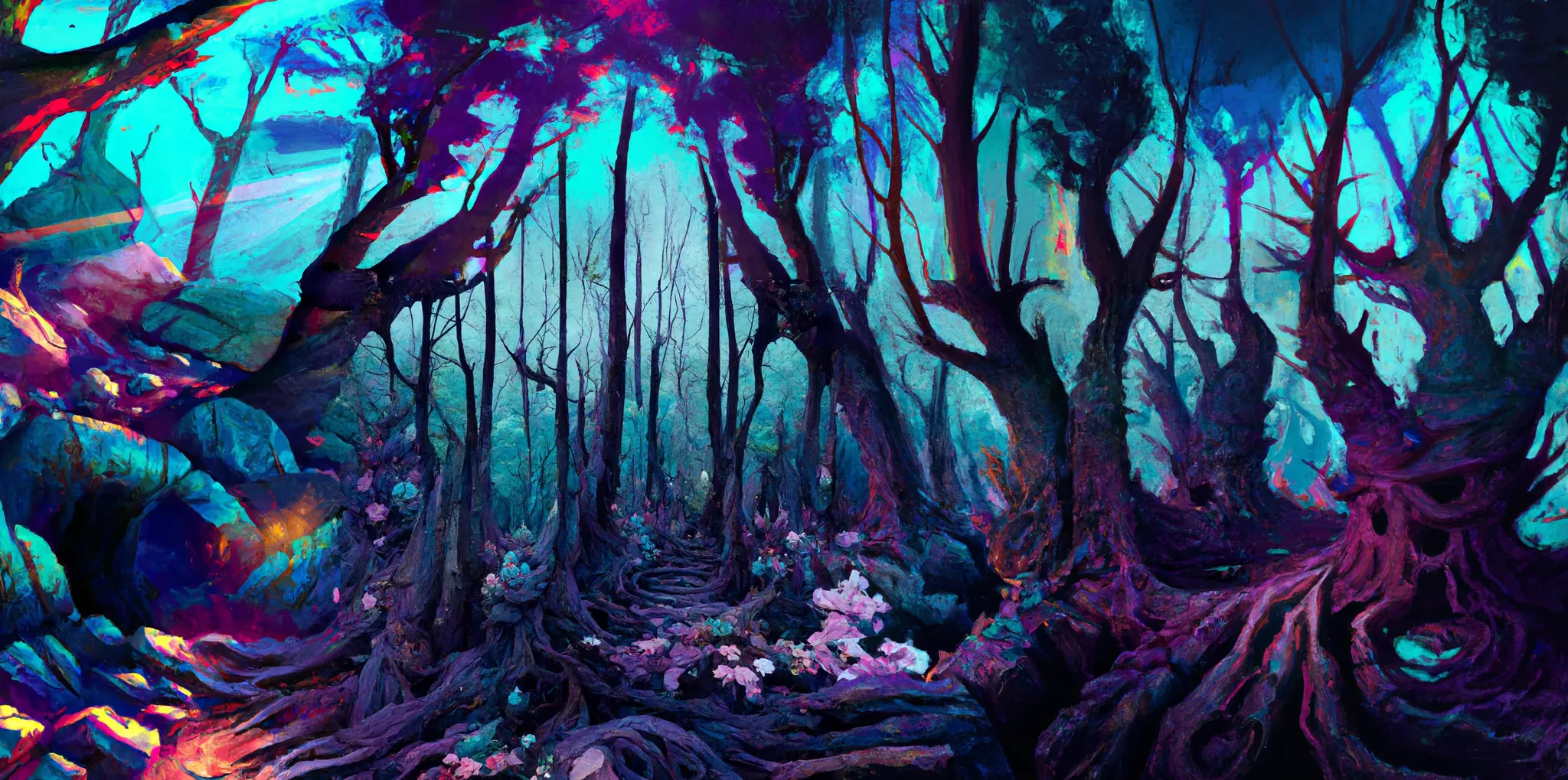
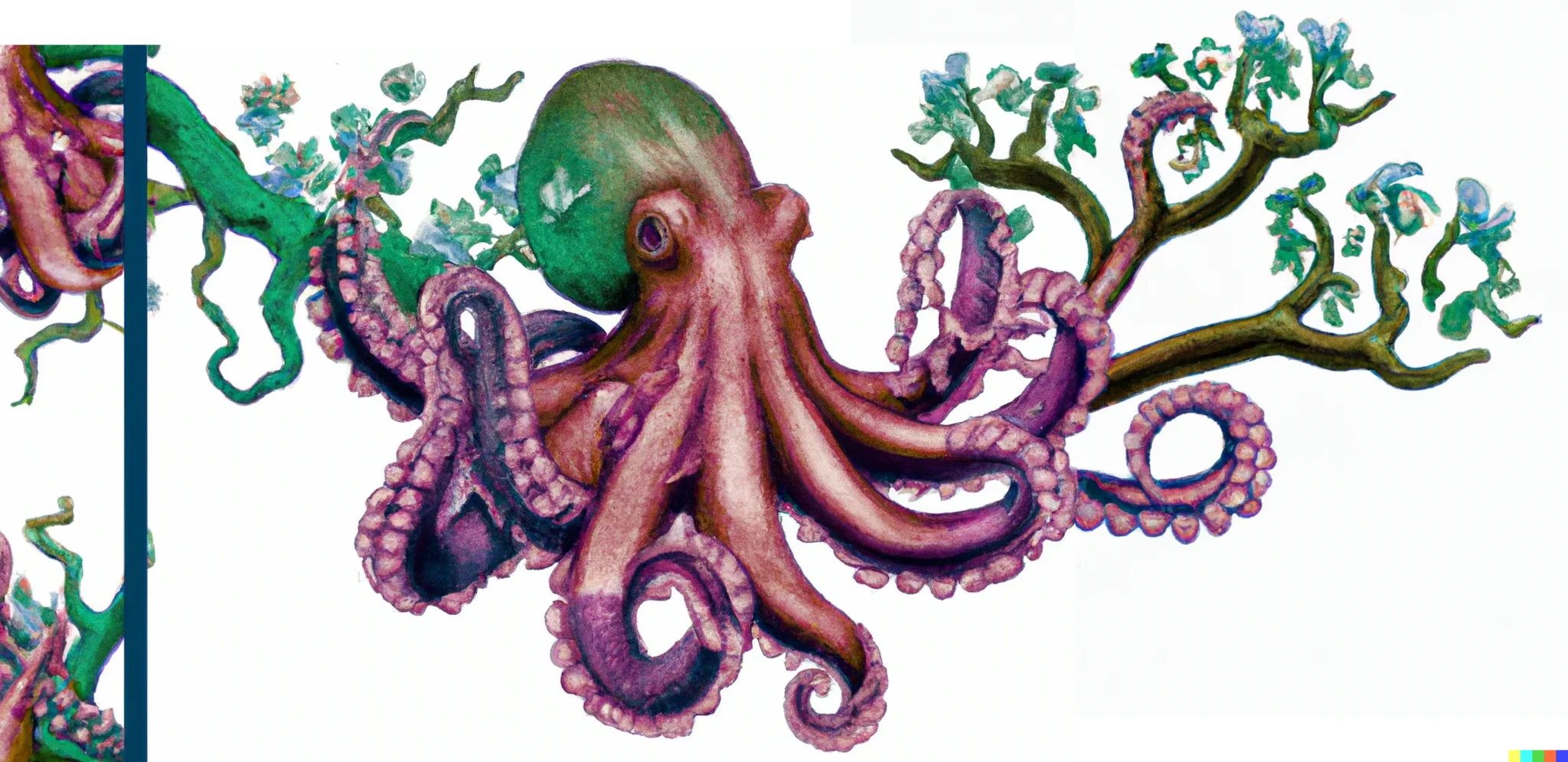
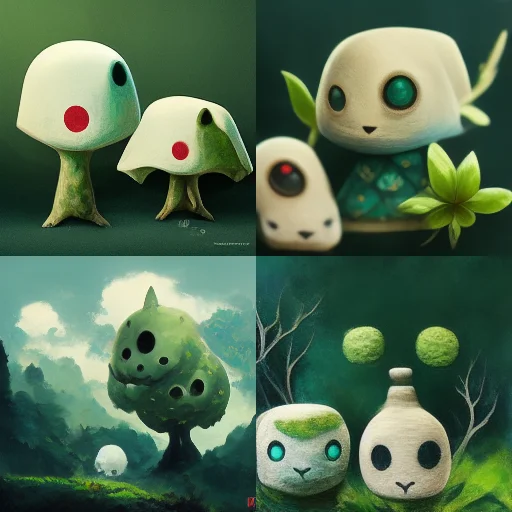
Given just two scenes, we concluded our paper theater would be in the form of a big 12 x 18 inch storybook, with a 12 x 12 inch top square for the day desert, and a 12 x 6 inch bottom rectangle for the night desert.
Generating the assets
We actually chose the one biome we had no assets for yet and decided to make it a truly collaborative process.
Day Desert
The joy of using AI to create assets is that you’ll never know what it’ll produce.
Jess wanted to make flying camels, and assumed the camels would have wings, but instead DALL-E decided to make superhero and helicopter camels. Here are a few favorites. Just look at how delighted they are to fly!
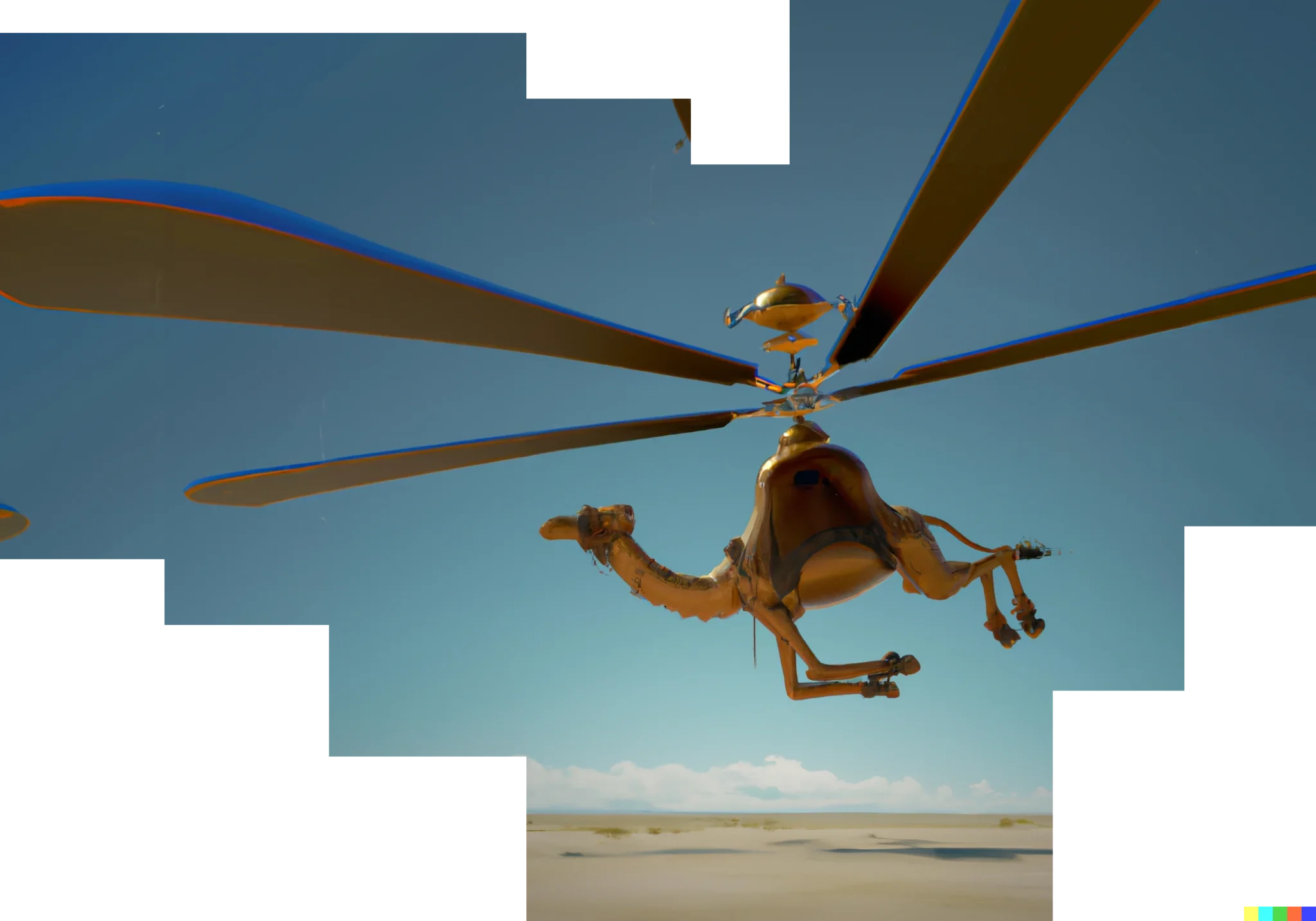
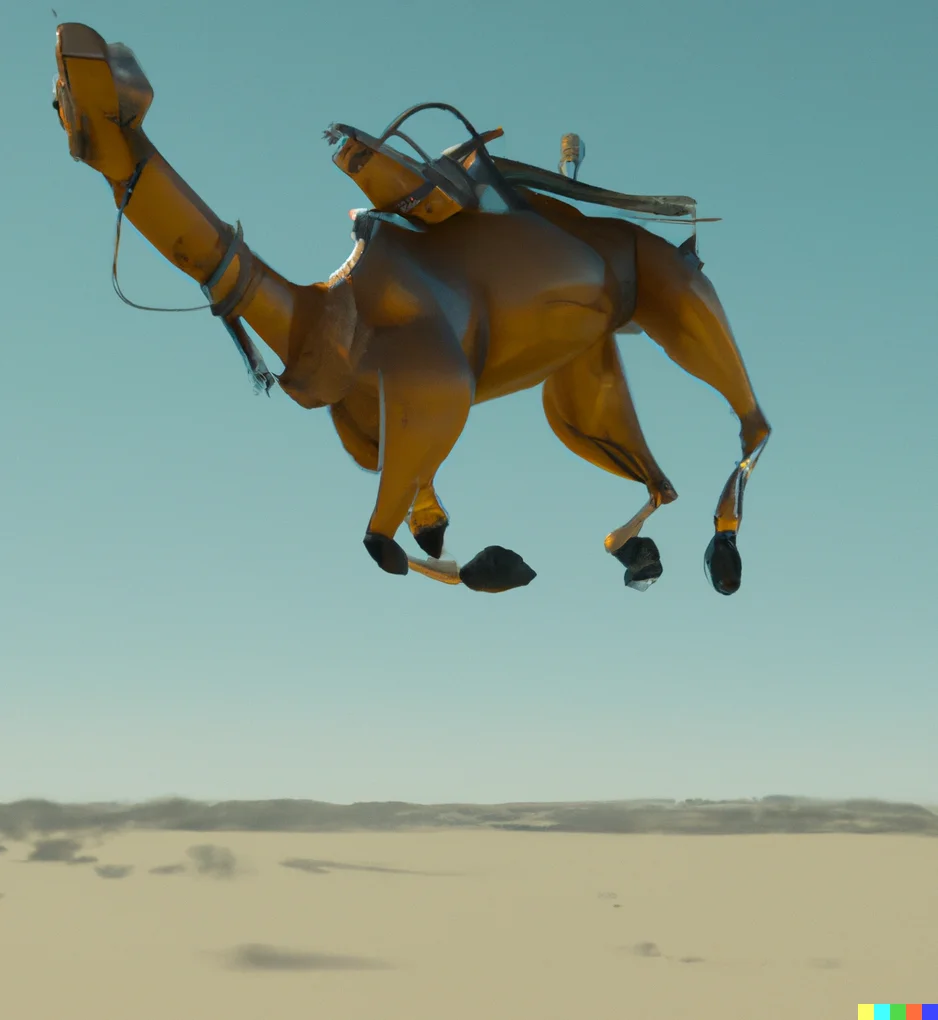
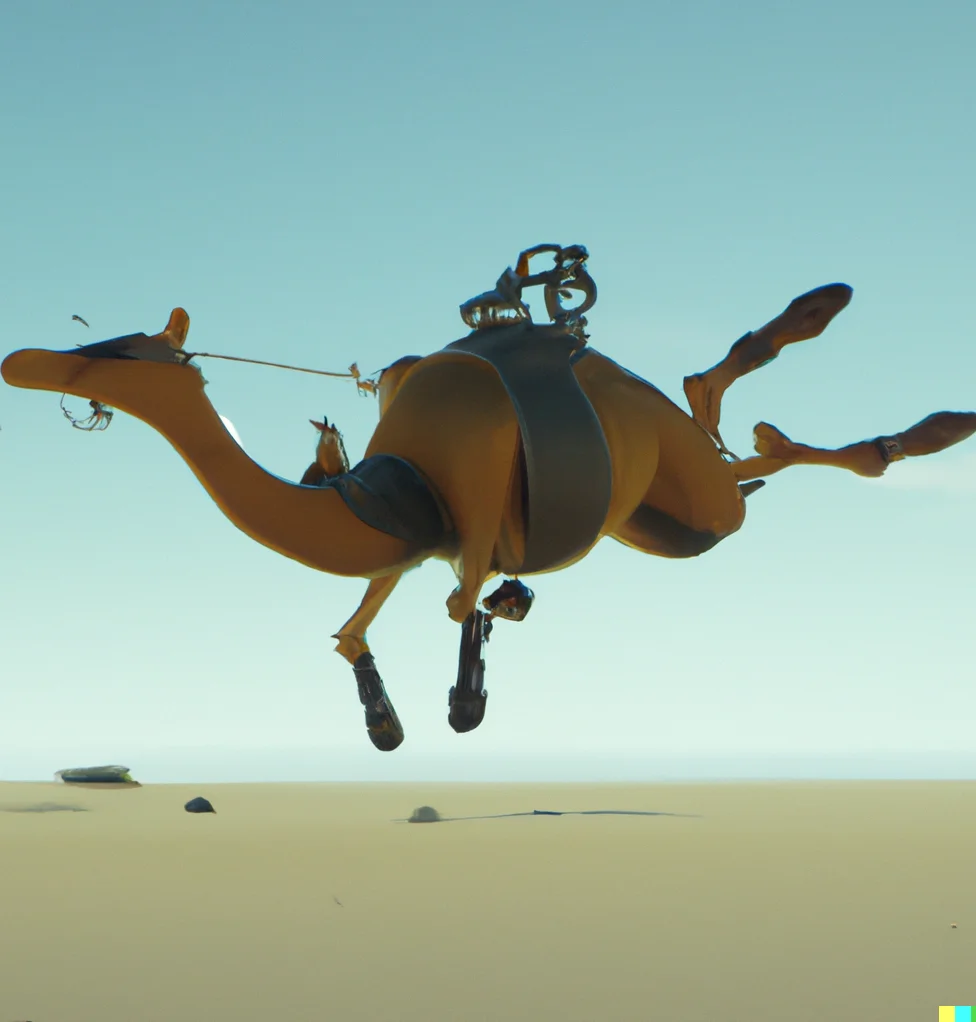
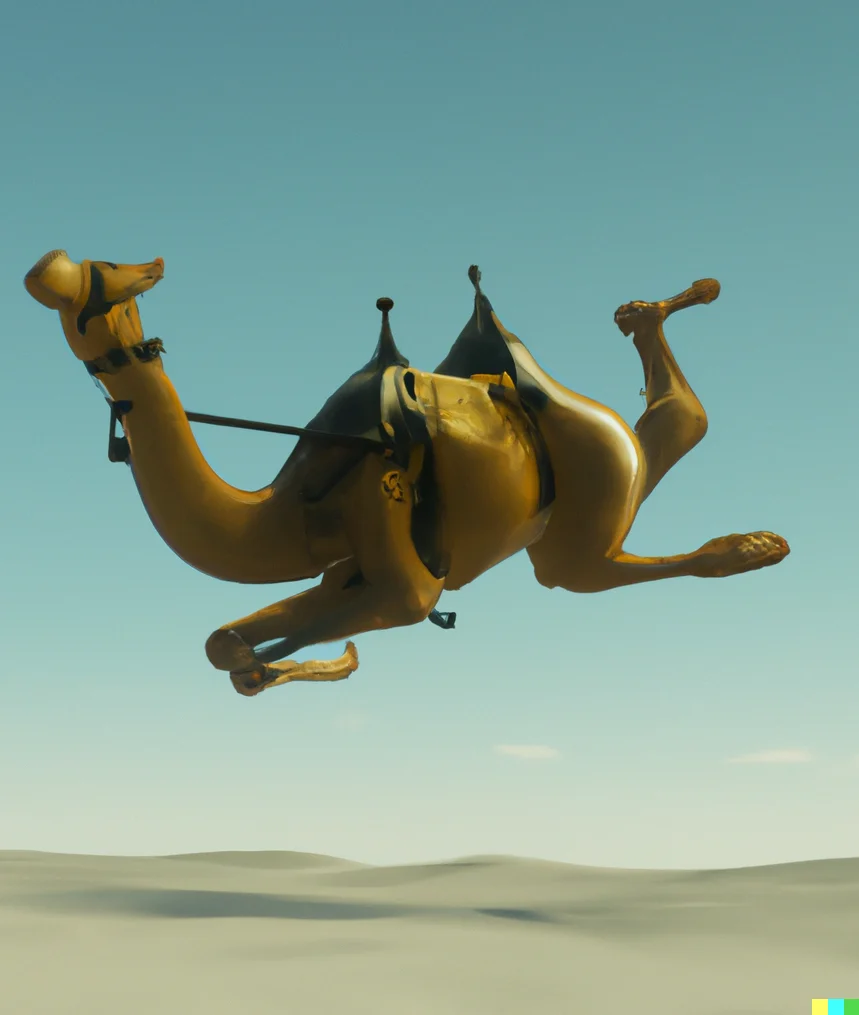
I worked on plant life, so went with succulents and palm trees. Using Midjourney, I ended up with some photorealistic succulents that looked like animals in disguise, and a very neon looking succulent pretending to be a palm tree.
Using DALL-E's outpainting tool, I was able to take my Midjourney palm succulent and extend it further.
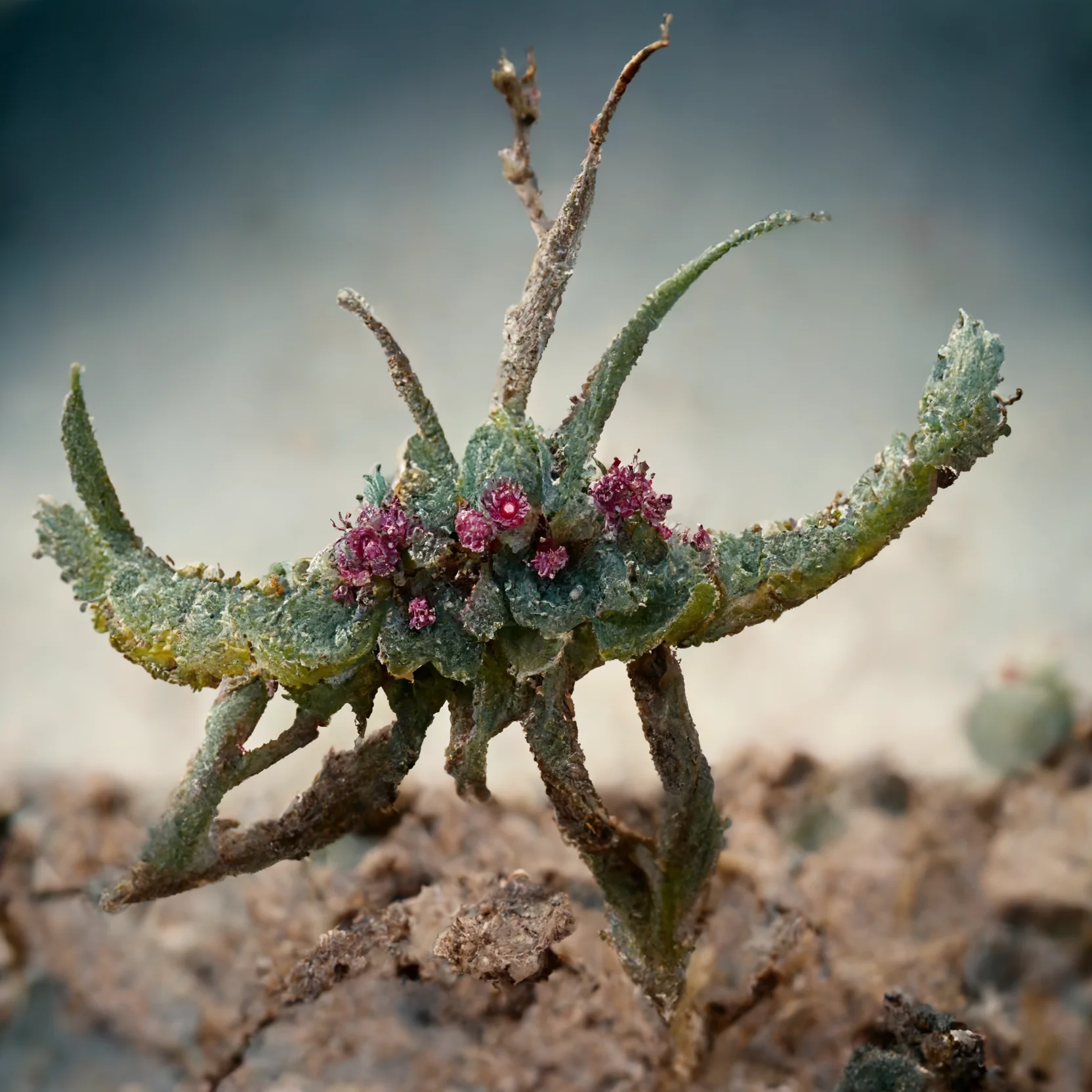

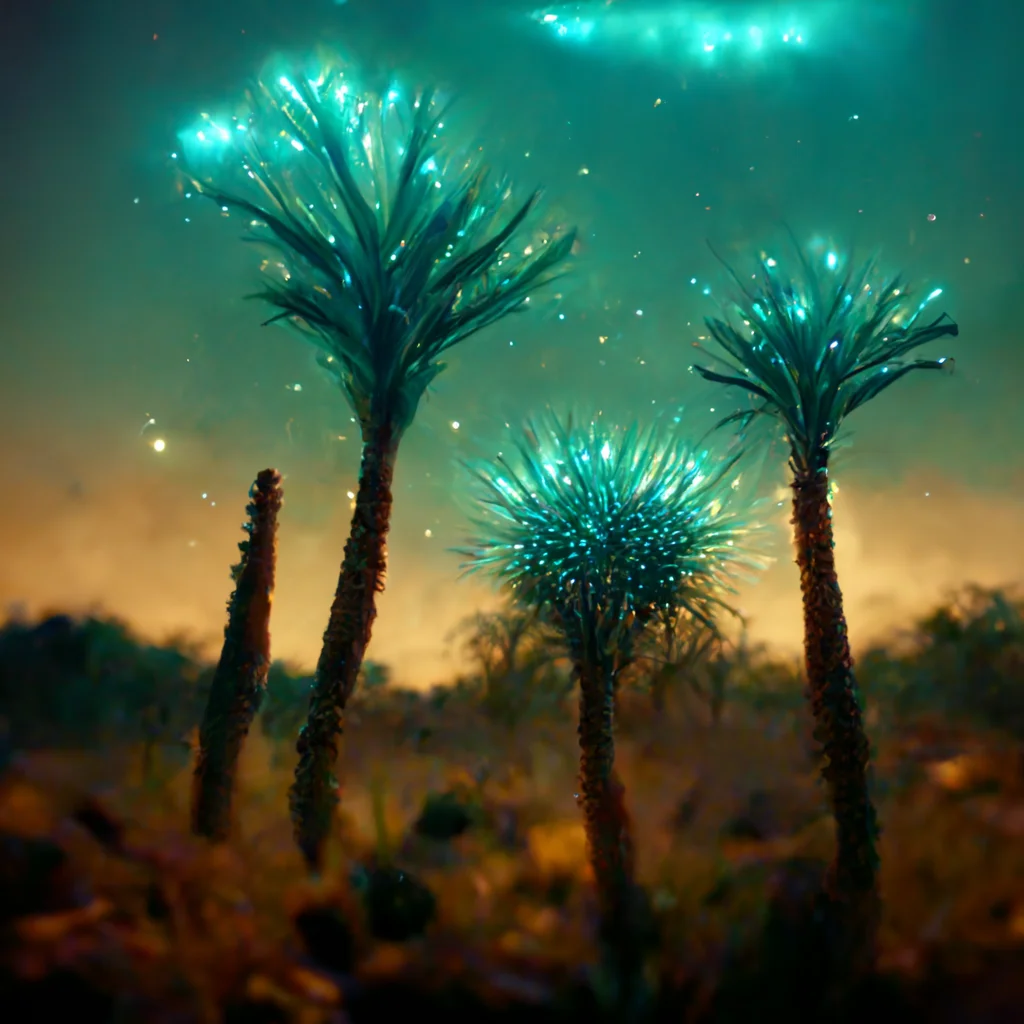
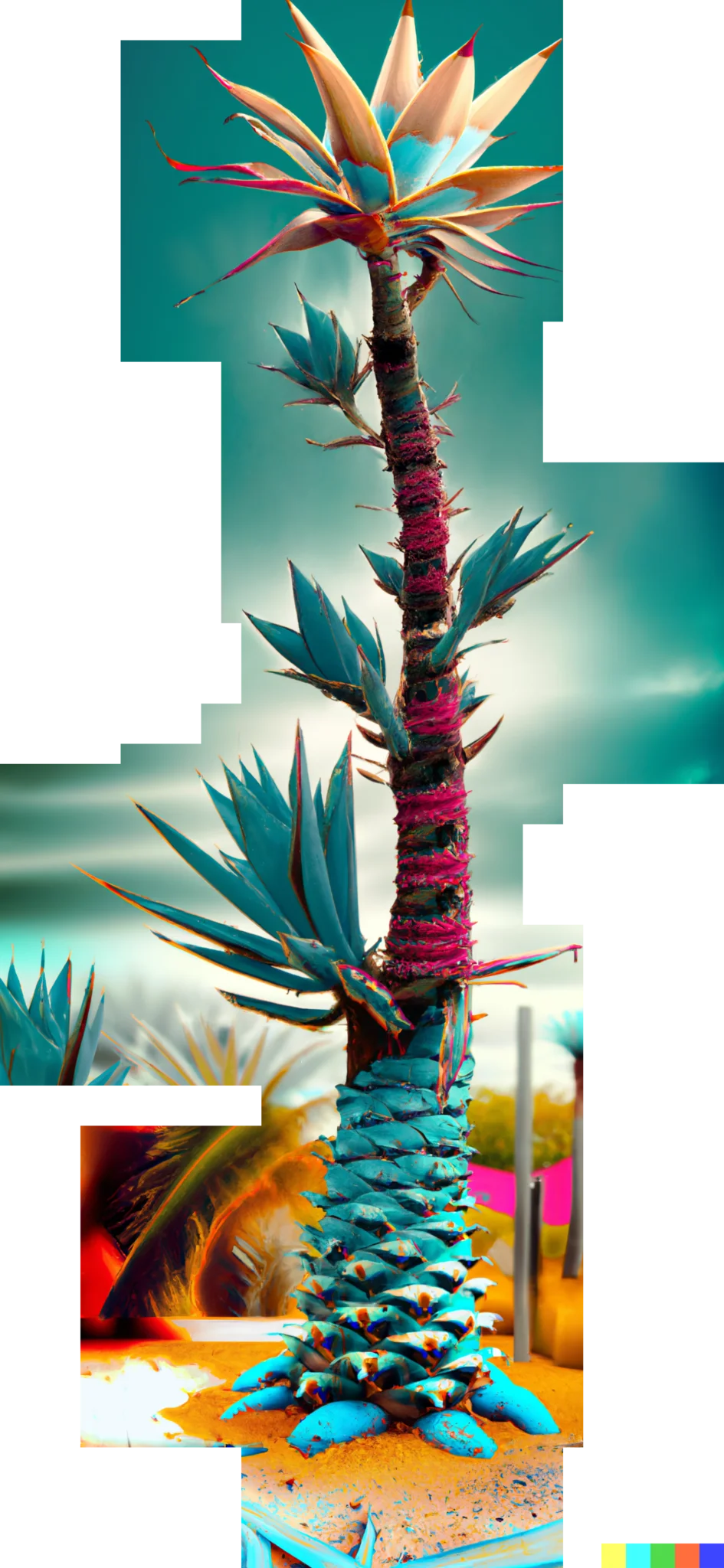
Alfonssette was in charge of the background. She tried a few styles before settling on something more realistic. Our final day landscape, followed by two runner-ups



Night Desert
We did the same process with the night one. We all really wanted bioluminescent lizards and flowers.
Lizards created with DALL-E, flowers by Midjourney.
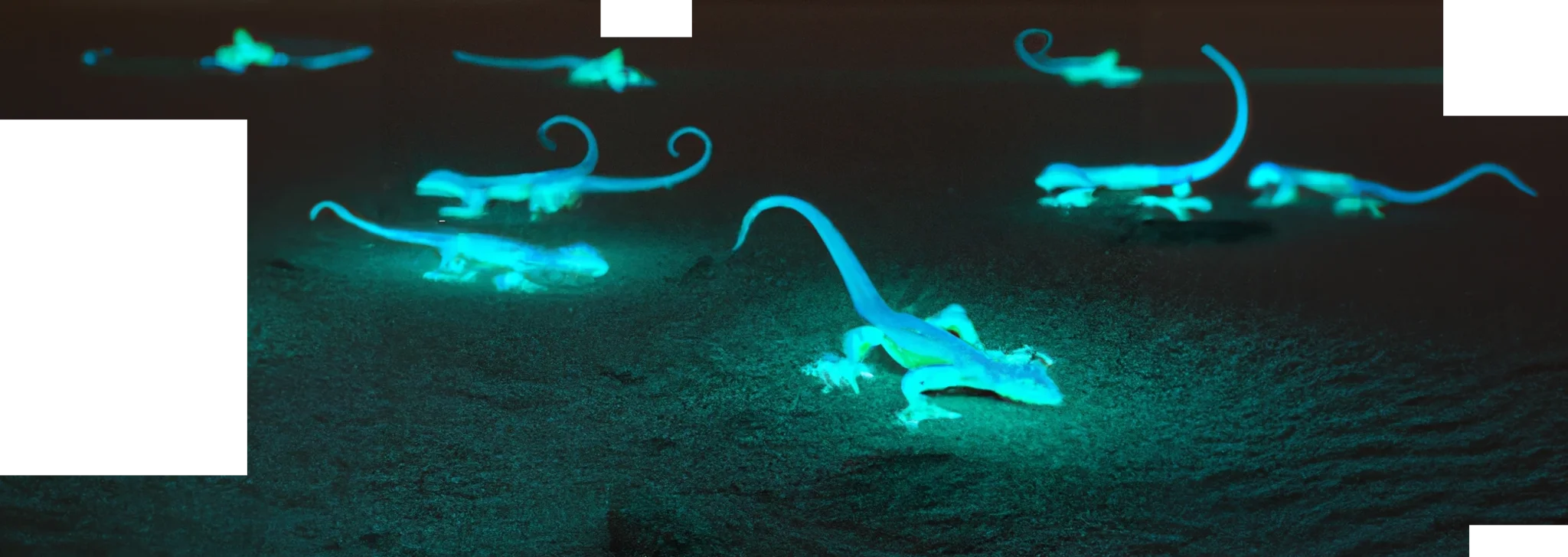
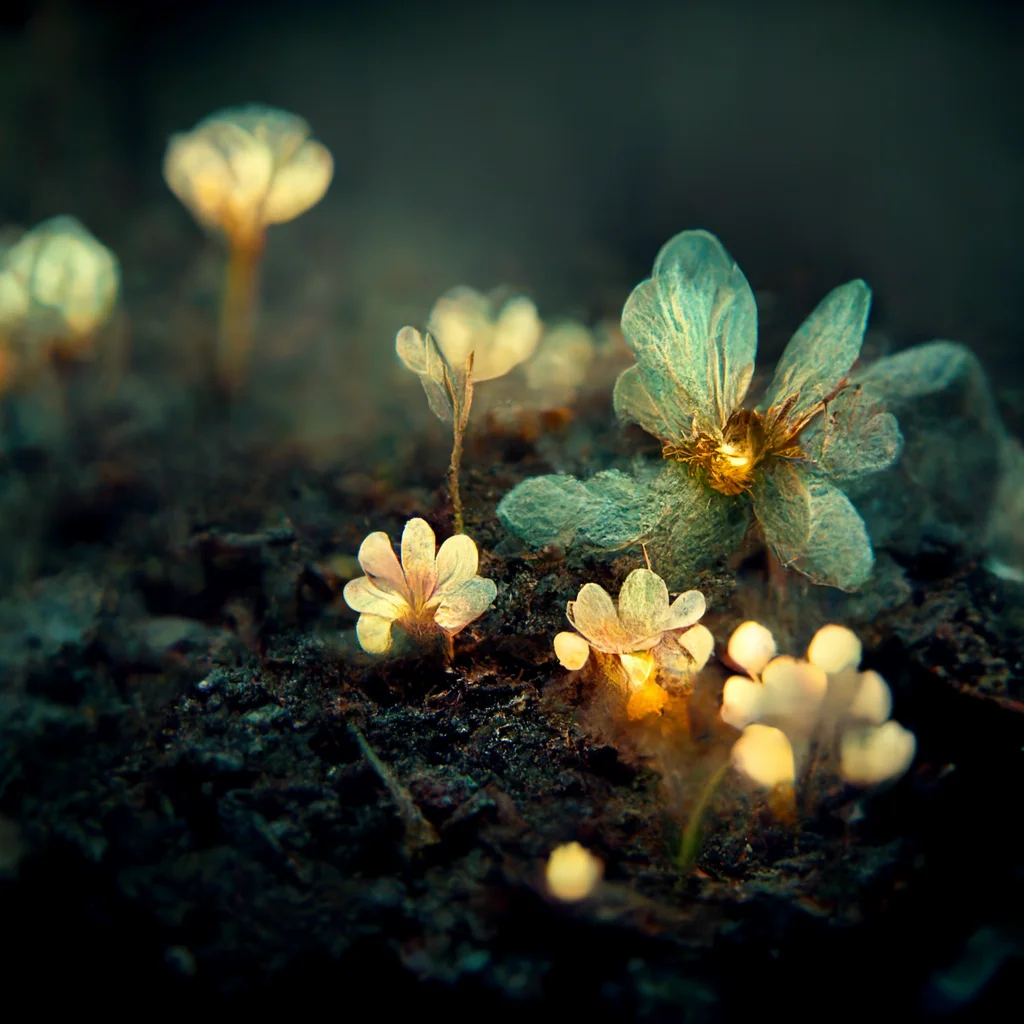
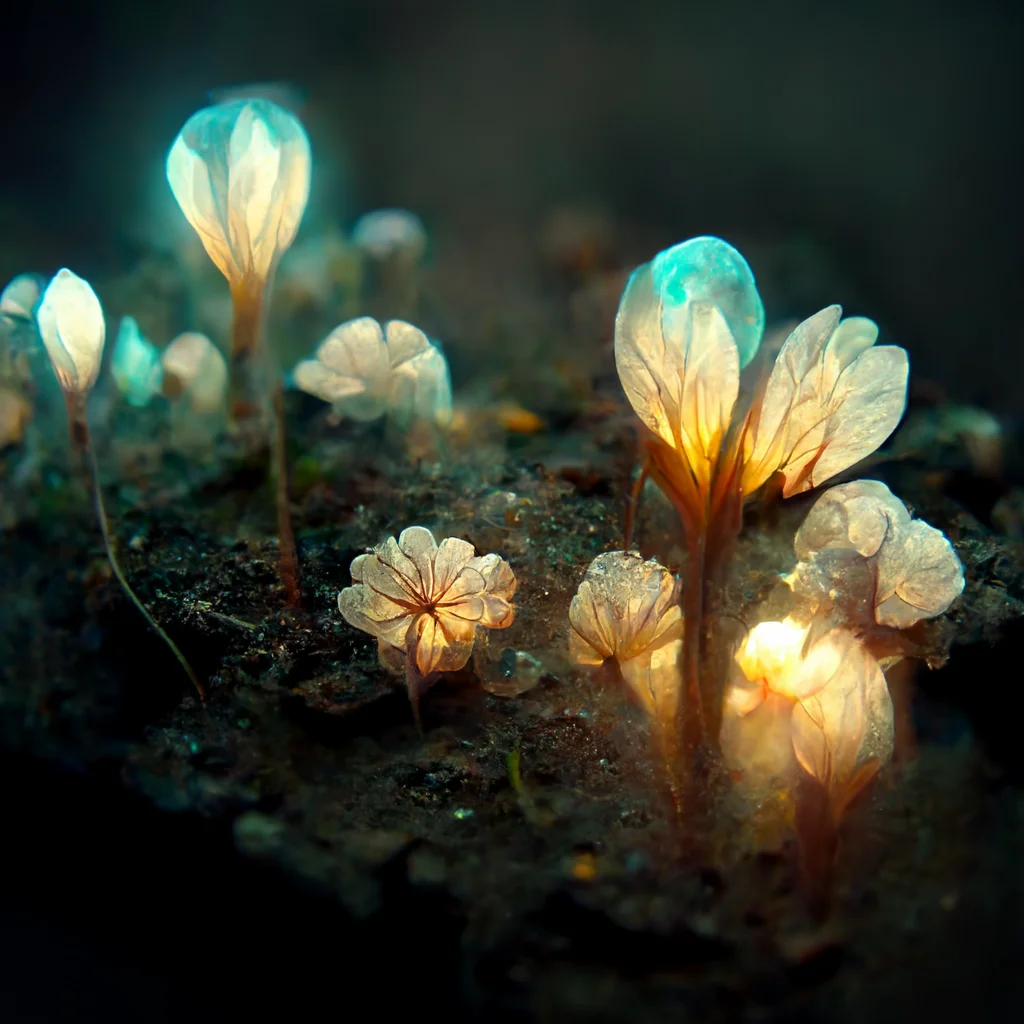
Our final night landscape, followed by two runner ups

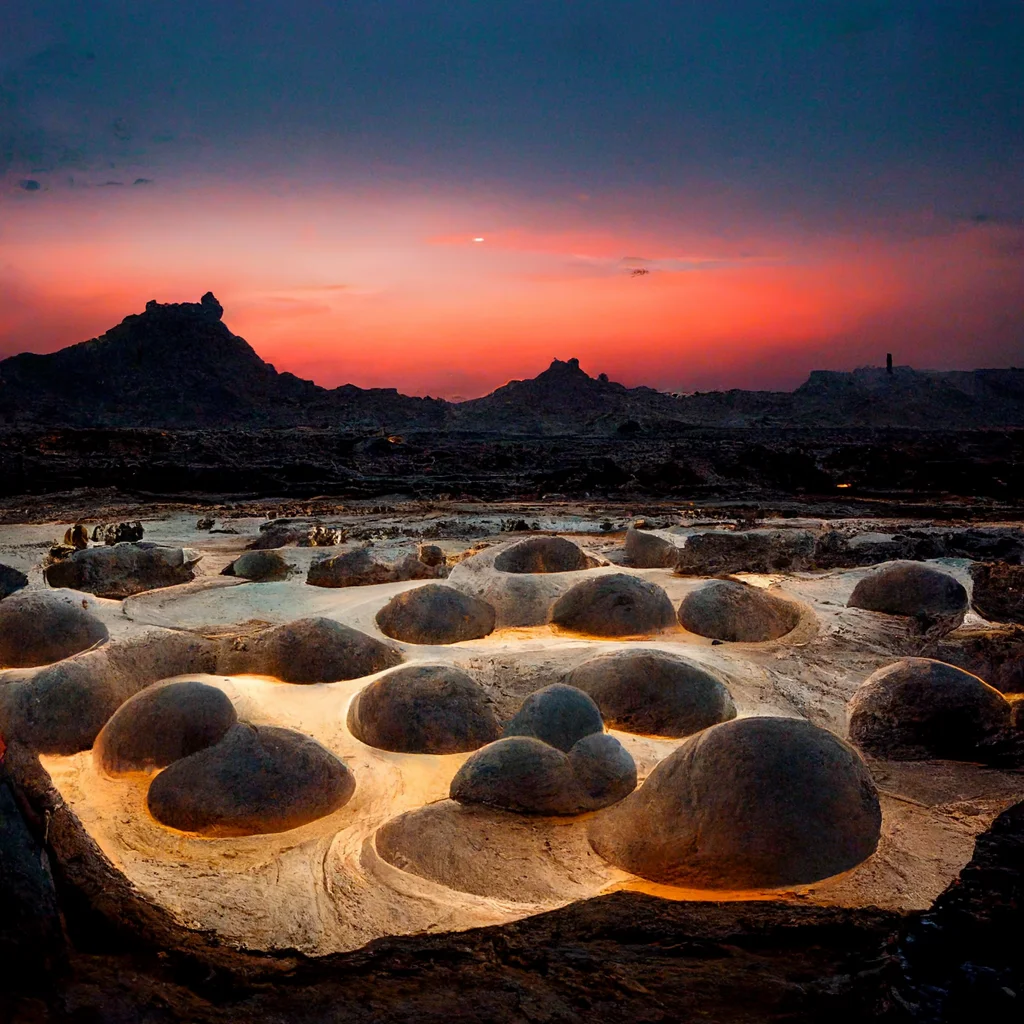
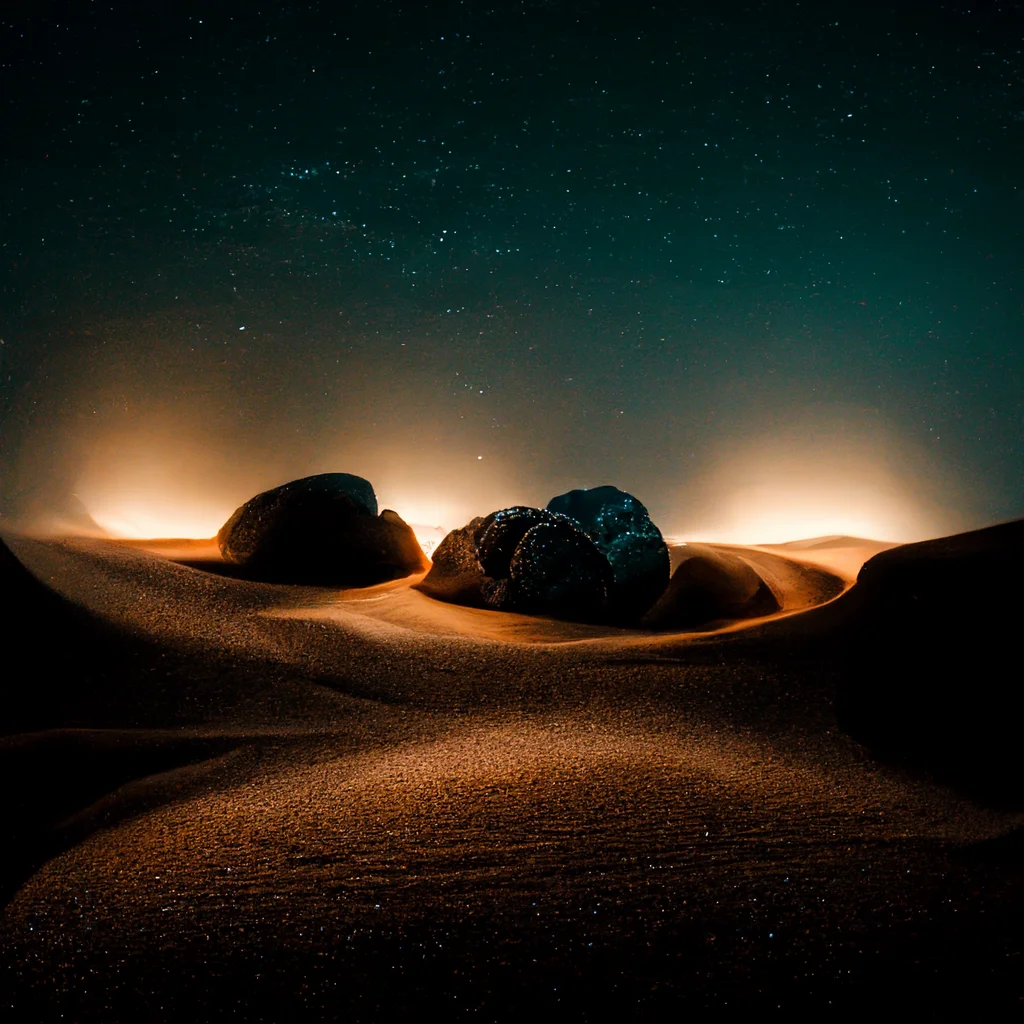
Composition & Layering
We decided we wanted each of the two scenes to be 4 layers deep. The background would be cut into 3-4 layers, and the layers would be:
- 1st layer has foliage and an animal
- 2nd layer has an animal
- 3rd layer is the horizon
- 4th layer is just sky
Day time desert
Our final day composition and the silhouettes of its layers, image traced in Adobe Illustrator, ready to be laser cut:
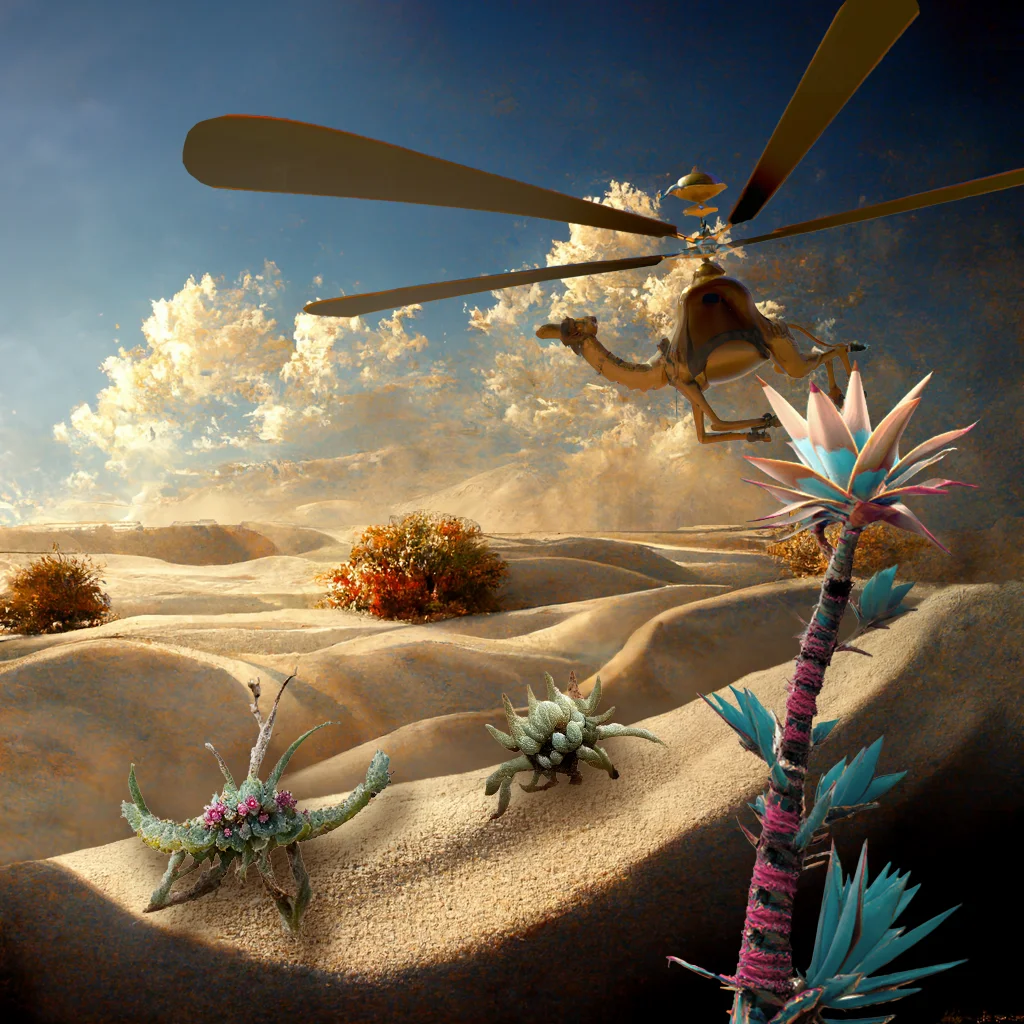
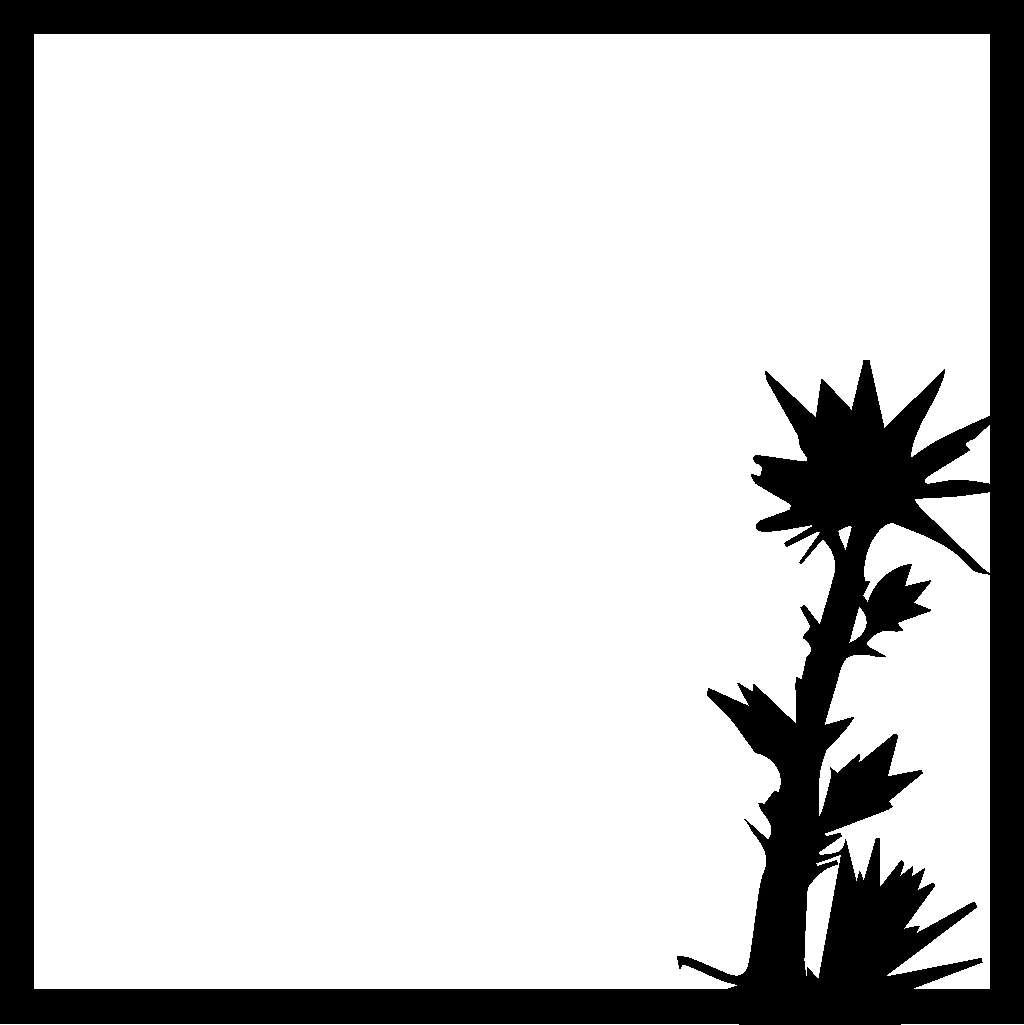
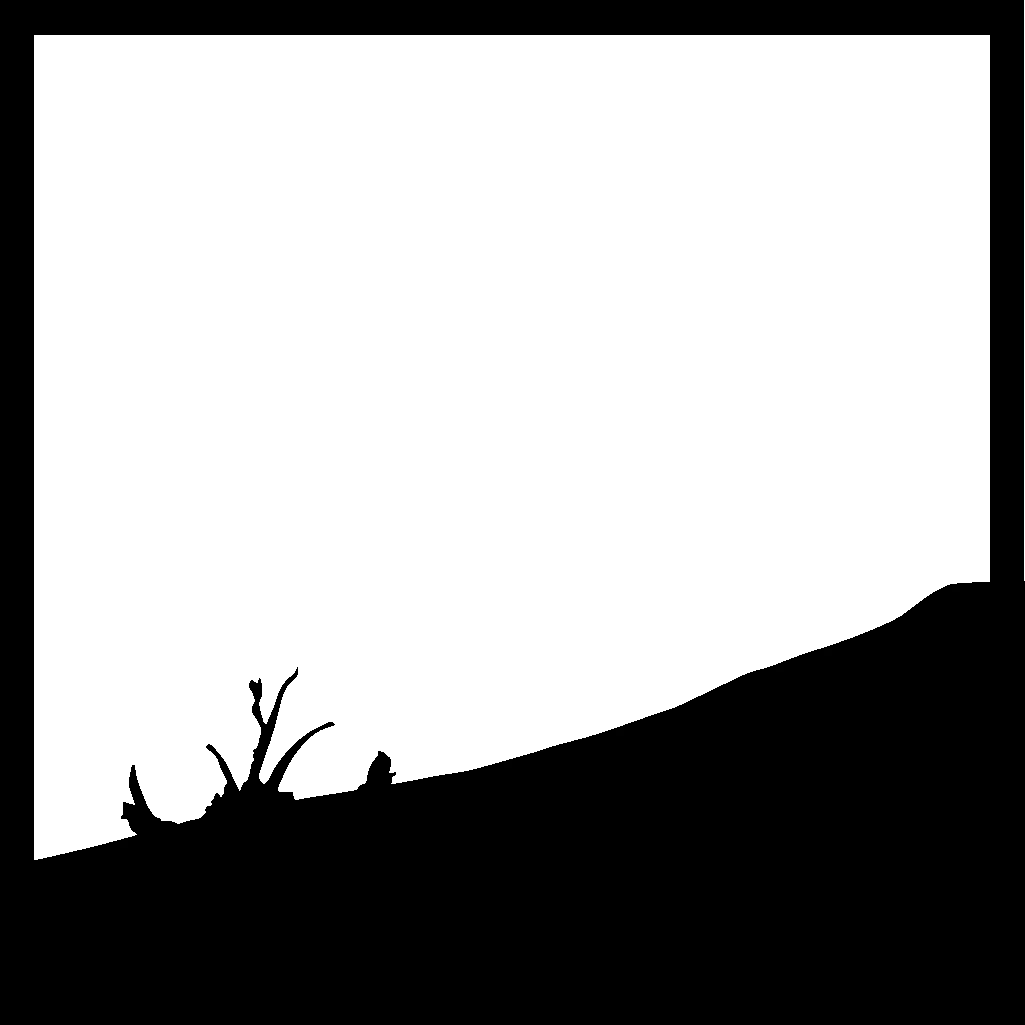
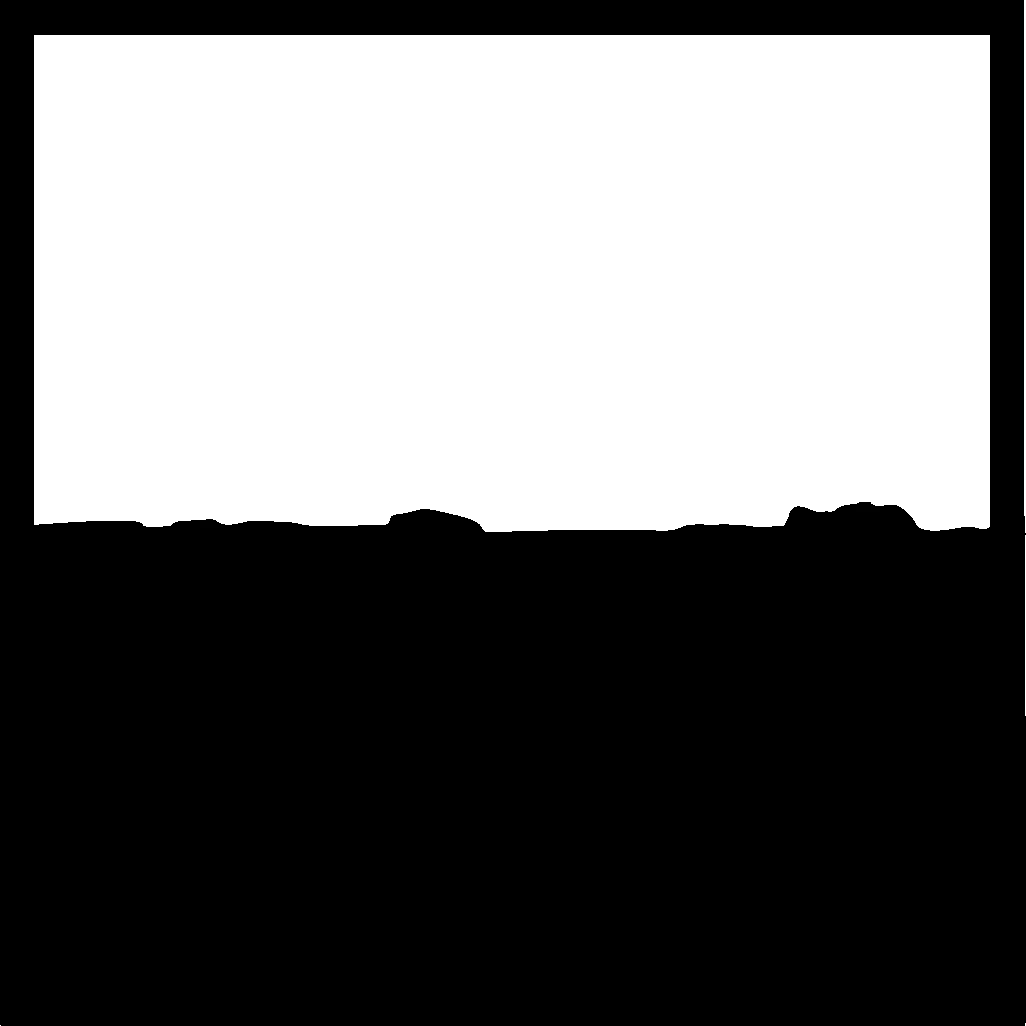
Night time desert
Our final night composition and the silhouettes of its layers, image traced in Adobe Illustrator, ready to be laser cut:
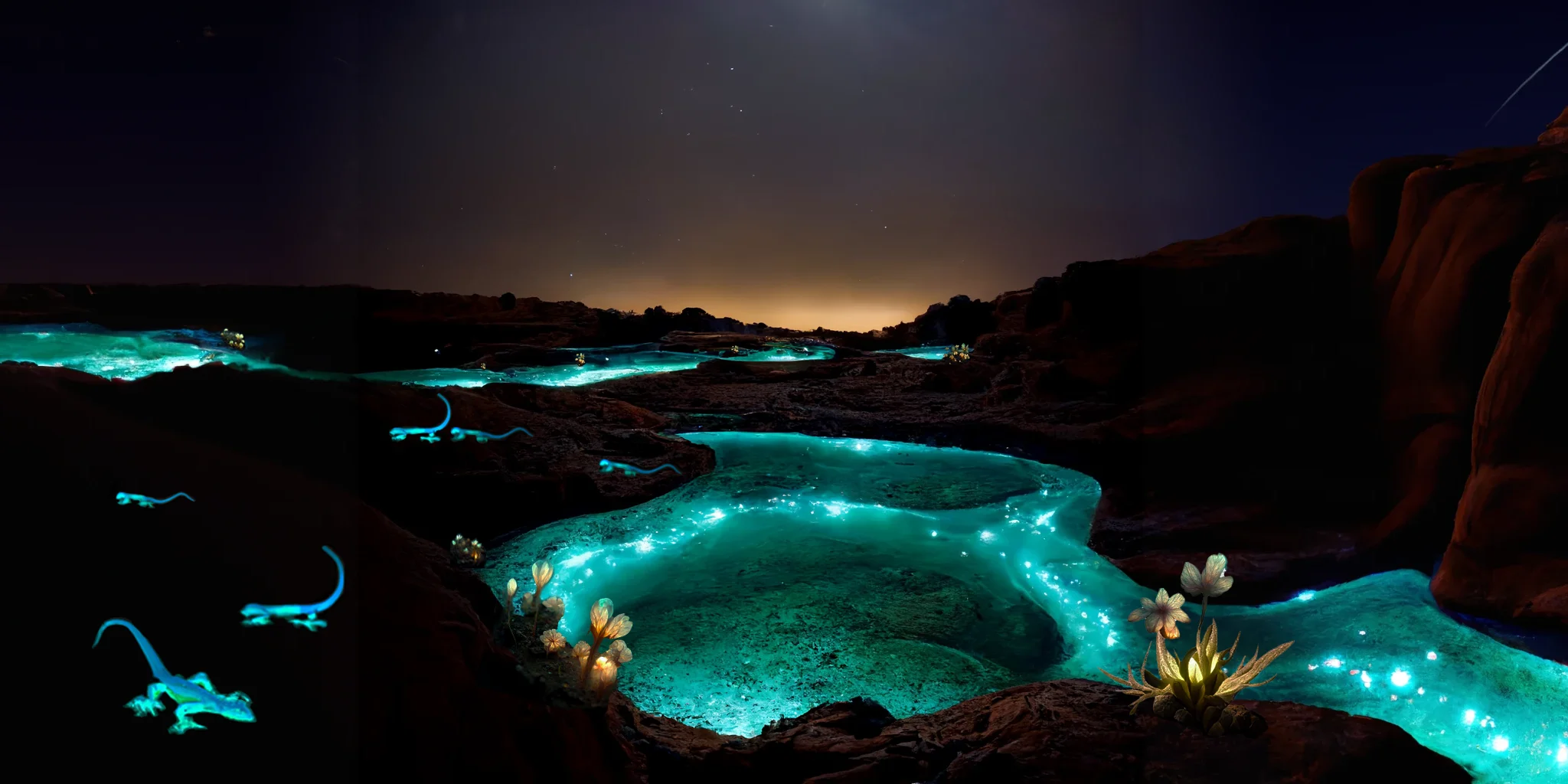
Importing into Adobe Aero
Before fabricating the final paper theater, we wanted to make sure the assets worked well together in Adobe Aero. We did a little test drive of the composition and animations.
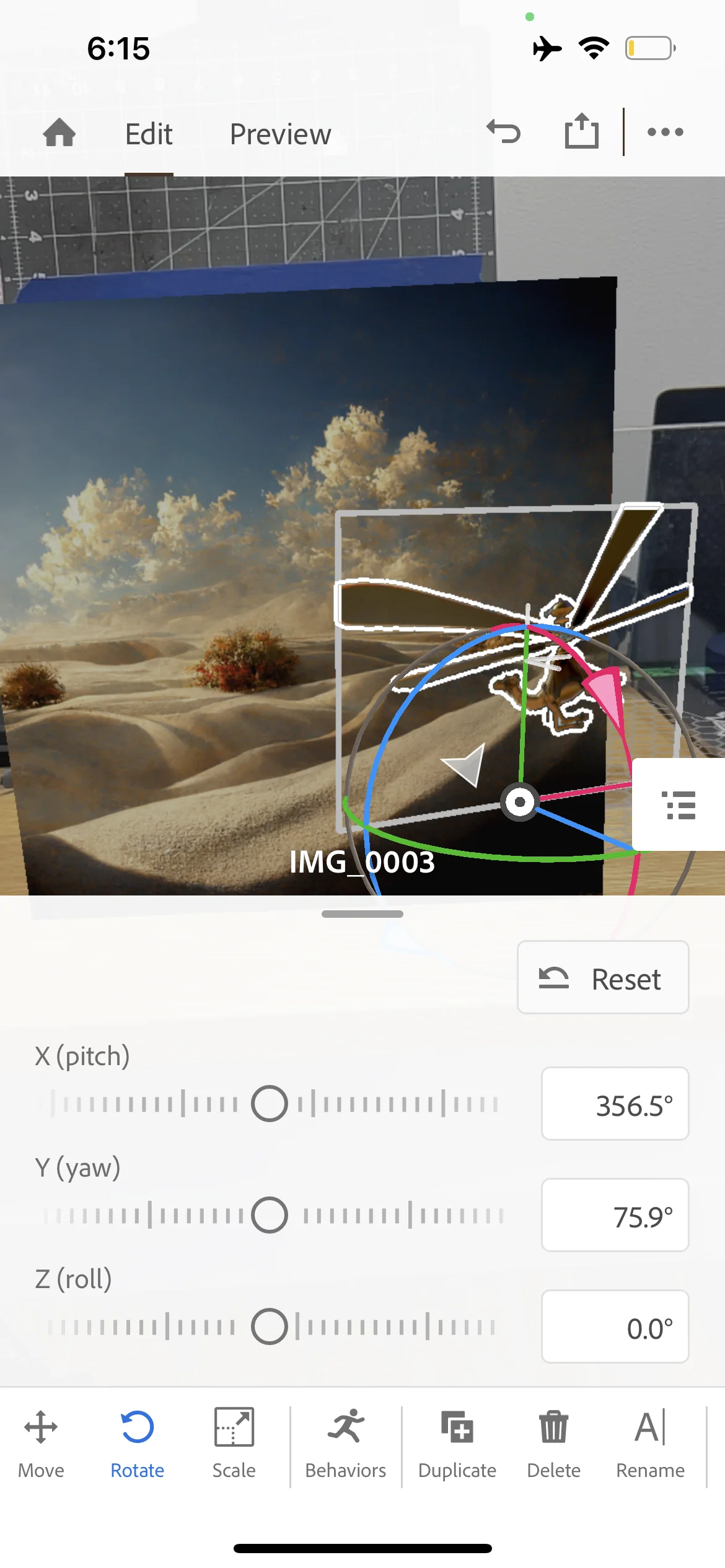
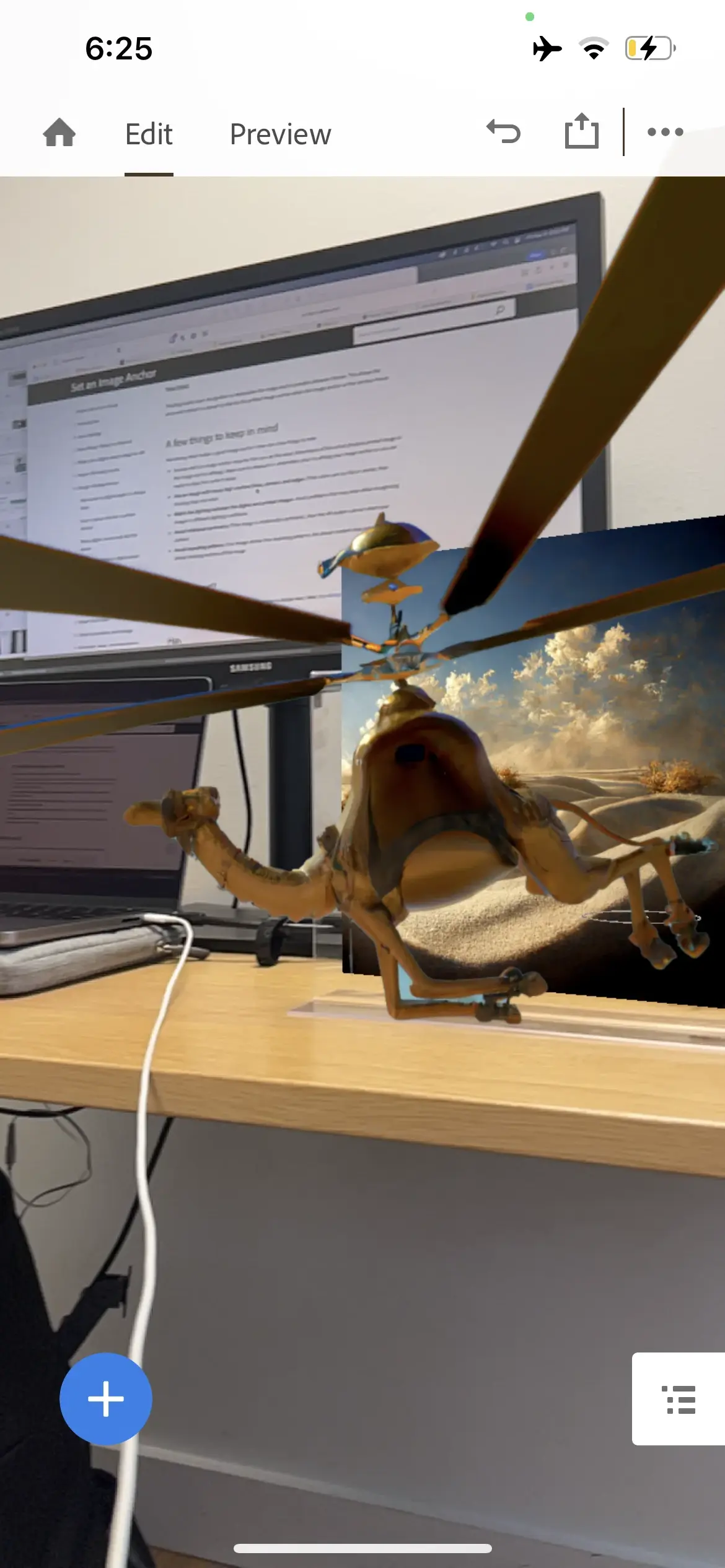

We used the laser cutter to make a quick prototype of the day desert out of cardboard to make sure the layers would work

Final Fabrication
Once we agreed on a proof-of-concept, it was time for fabrication!
I went home to San Francisco for Halloween and grabbed paper at my favorite stationary/paper store: Flax!
They had so many types of papers with different weights! We ended up buying 2 different types of cardstock paper for the "pages". We're no experts at papercraft, so we used both to test out which was more suitable and rigid for a paper theater. The recycled paper they had was affordable with a nice "old" texture to them, so we also purchased 4 different colors of recycled paper for the book covers.
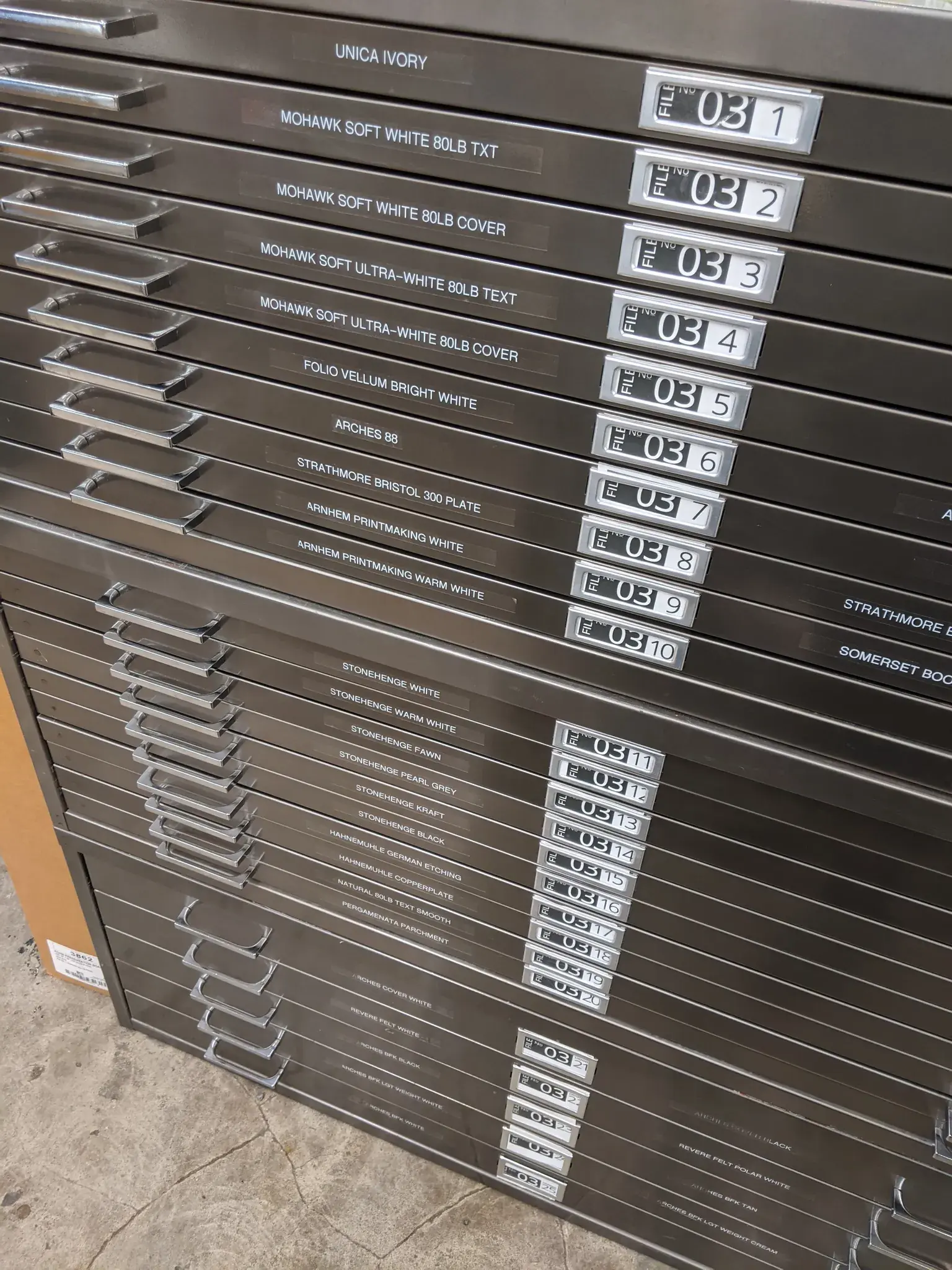
We set to cut out our layers out of the cardstocks as outlined in Adobe Illustrator files. For both day and night, we were married to the laser cutter.
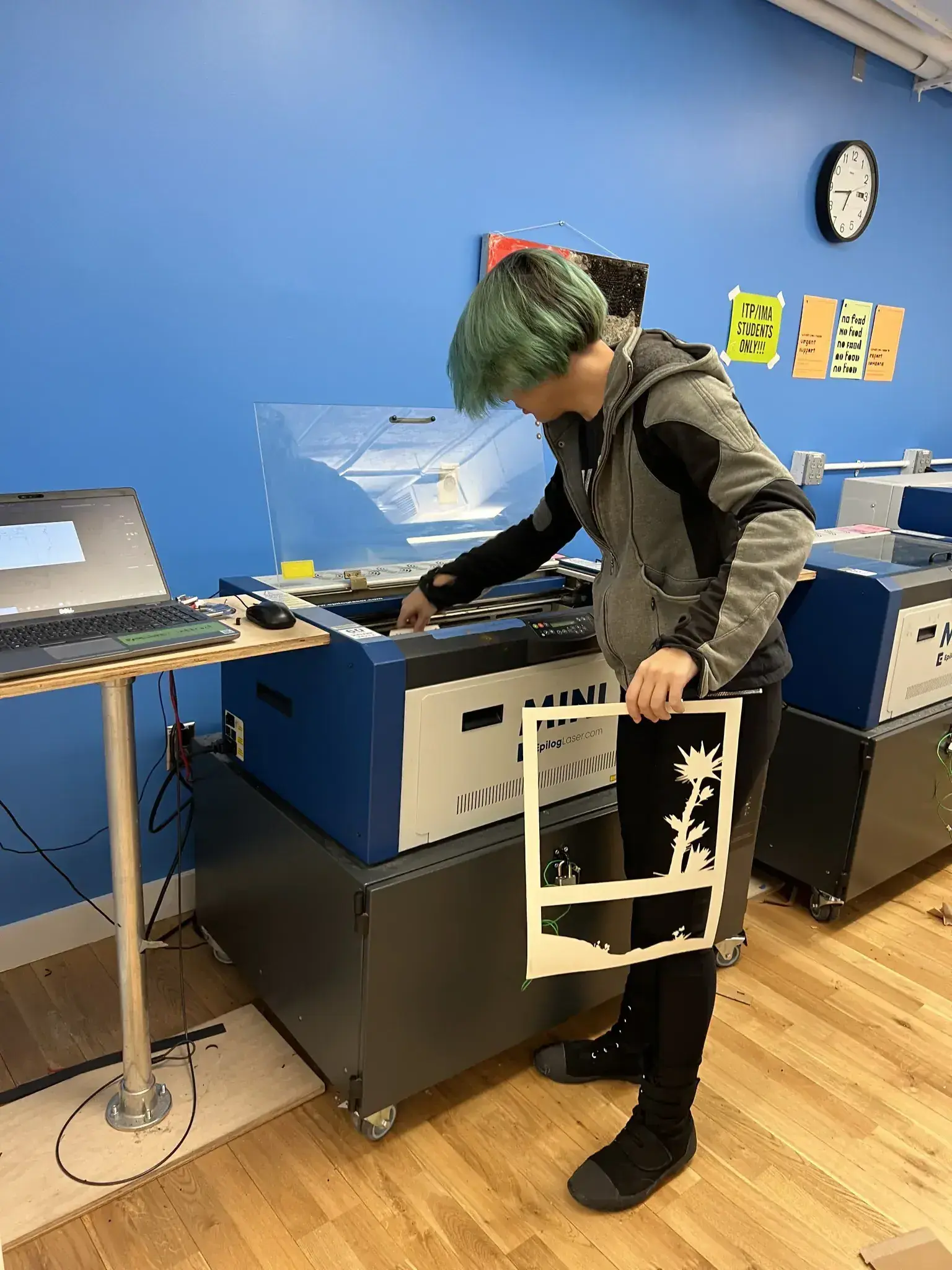
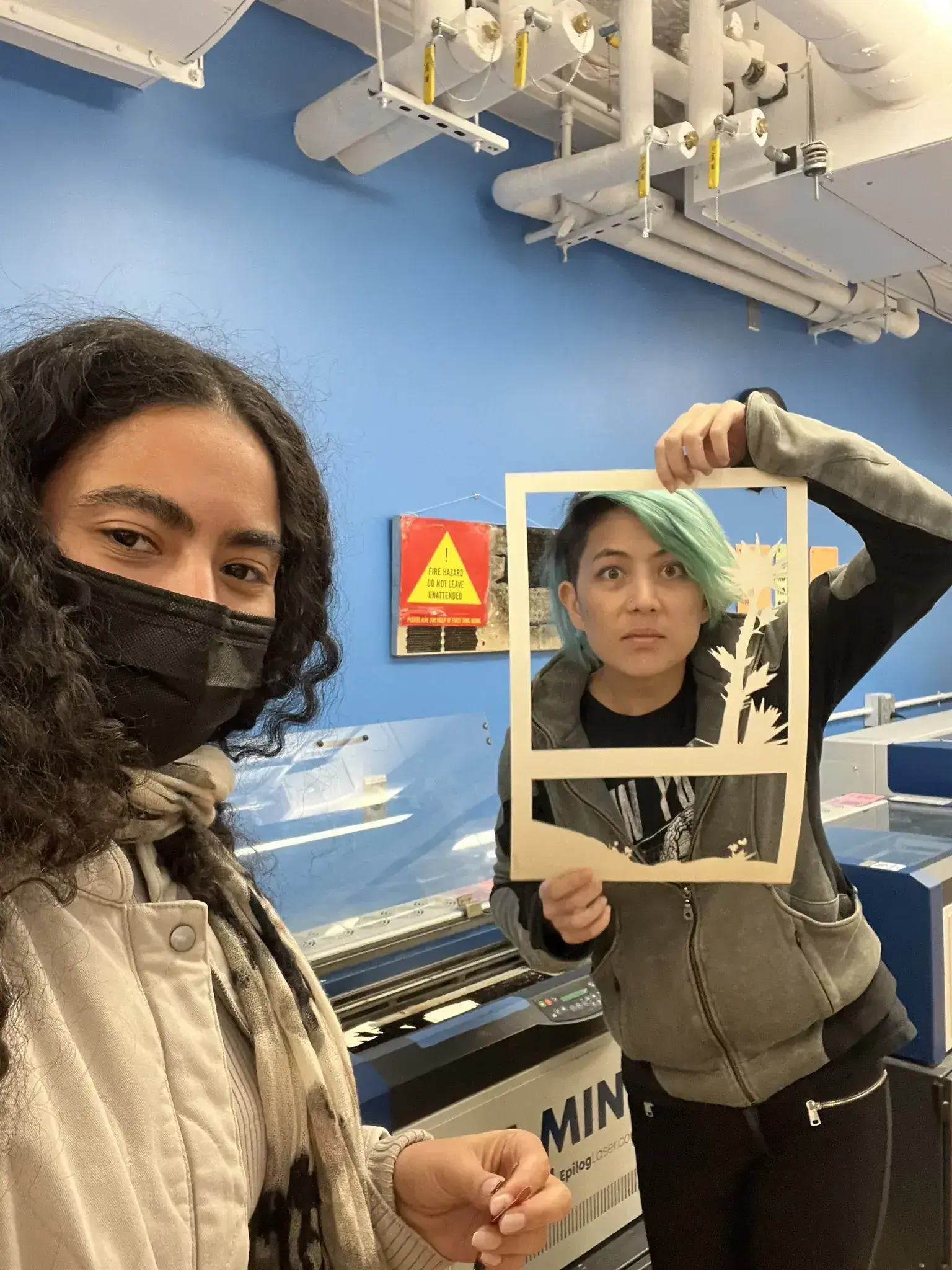
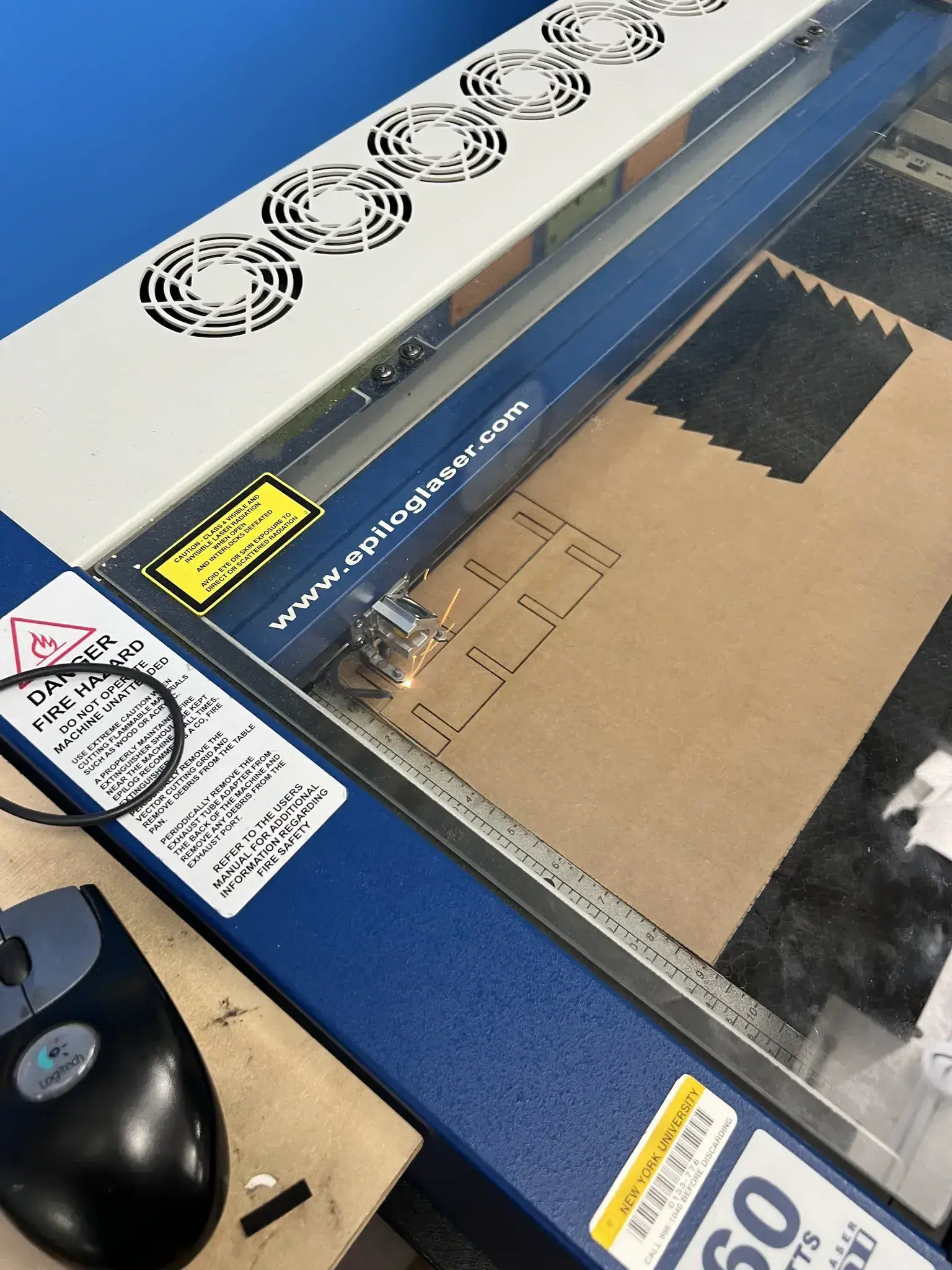
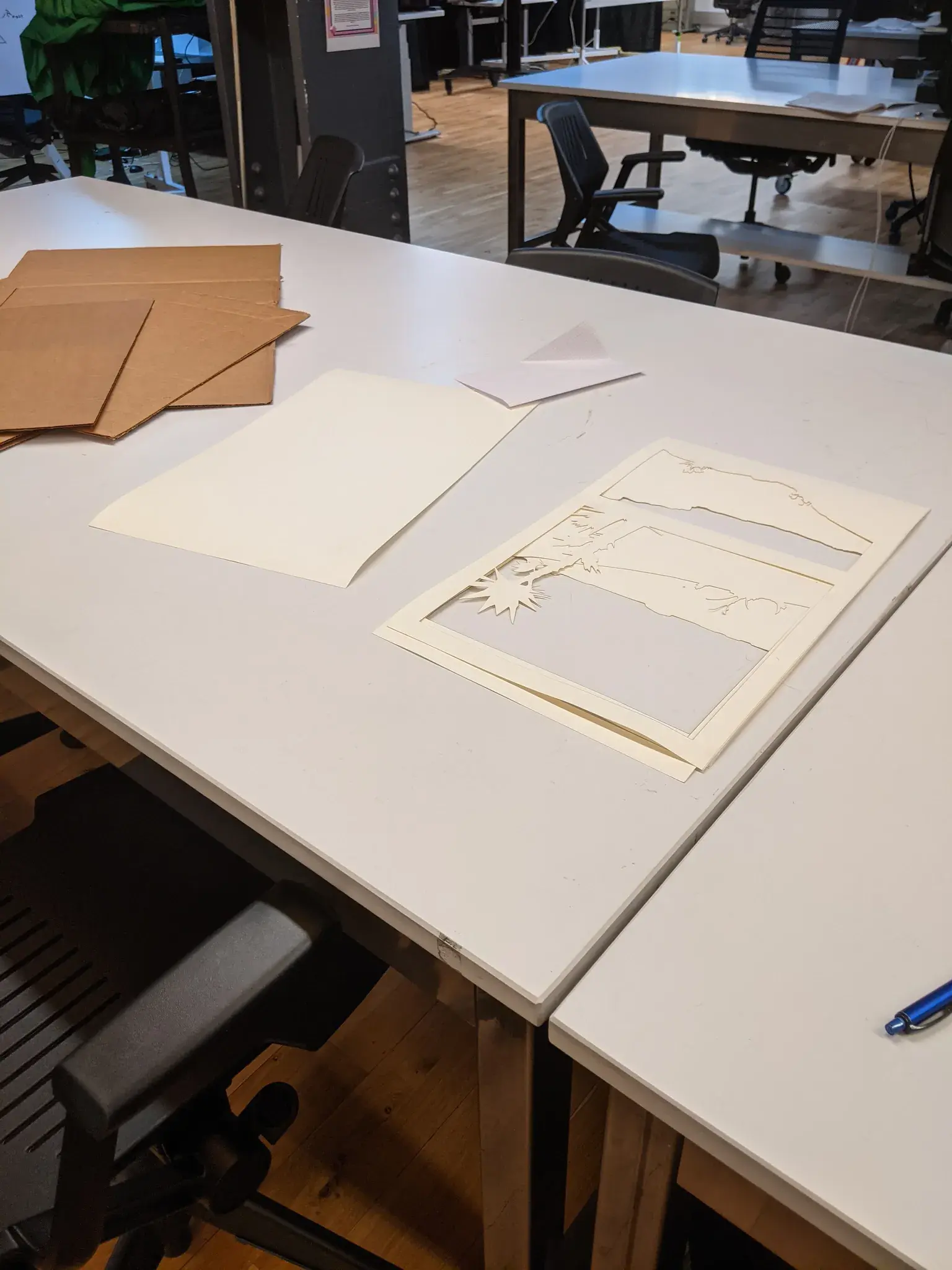
We glued cardboard frames to the back of the cardstock to make it more rigid plus added stacked cardboard spacers in between each layer to give that paper theater look.
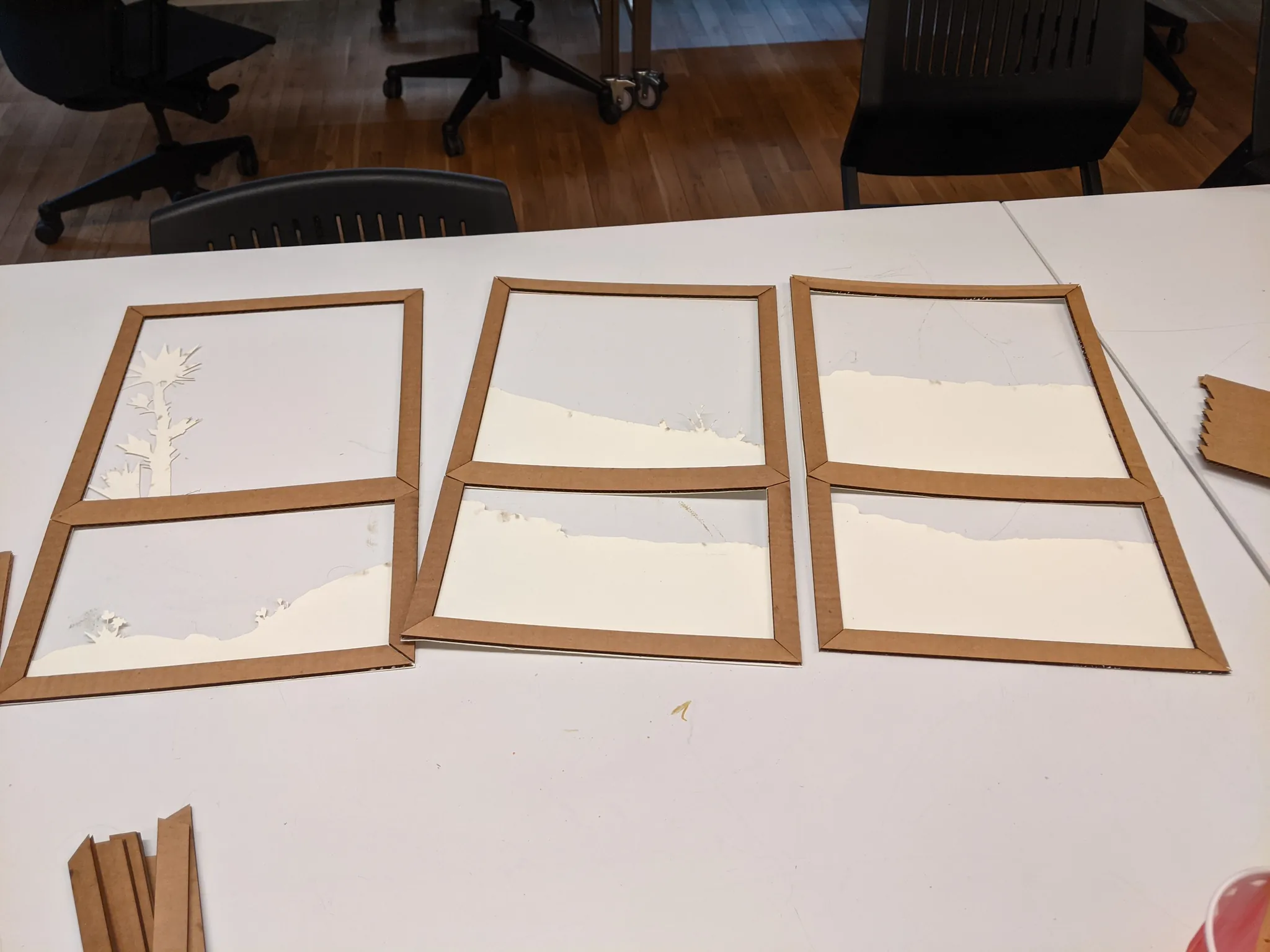

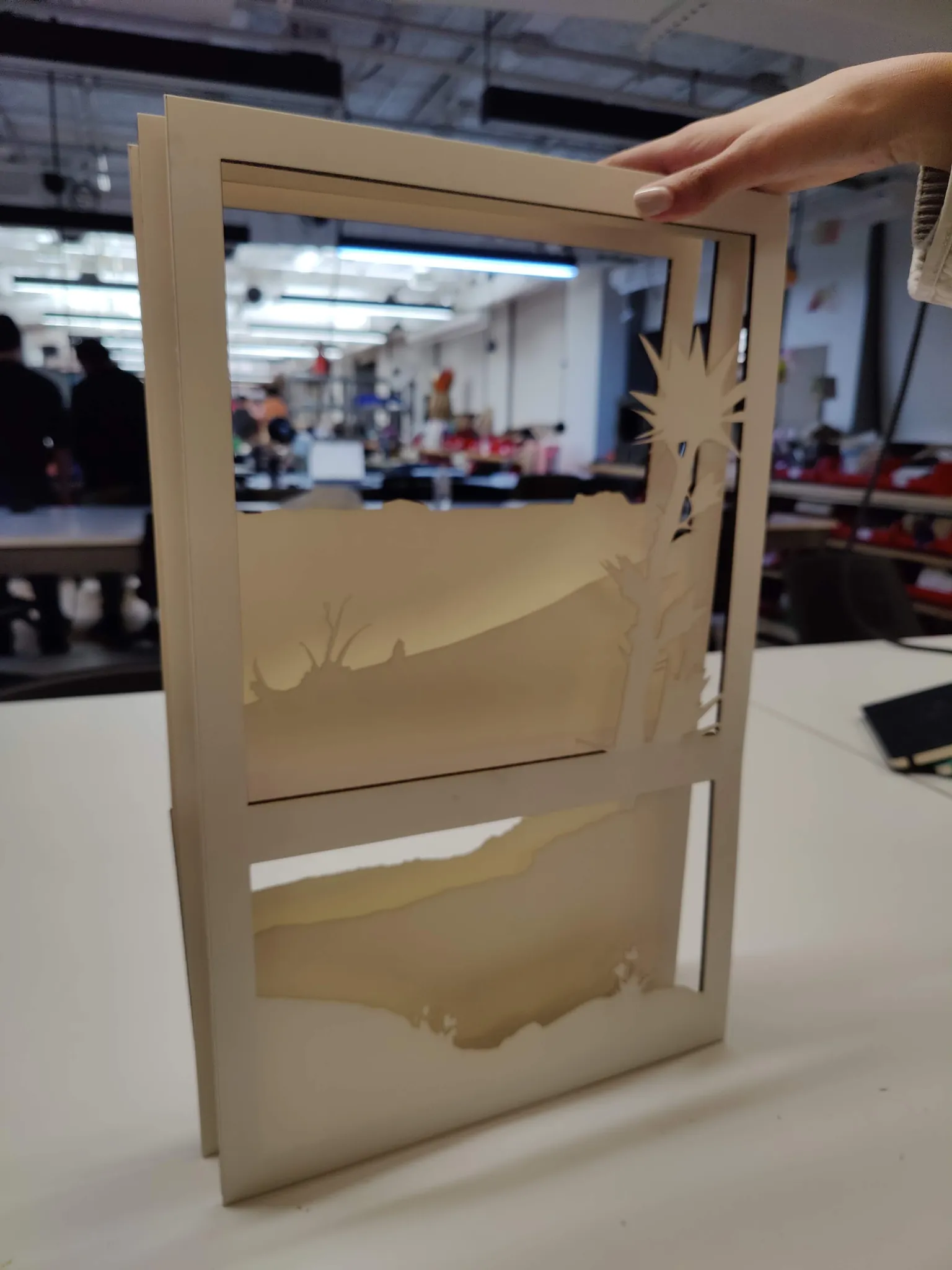
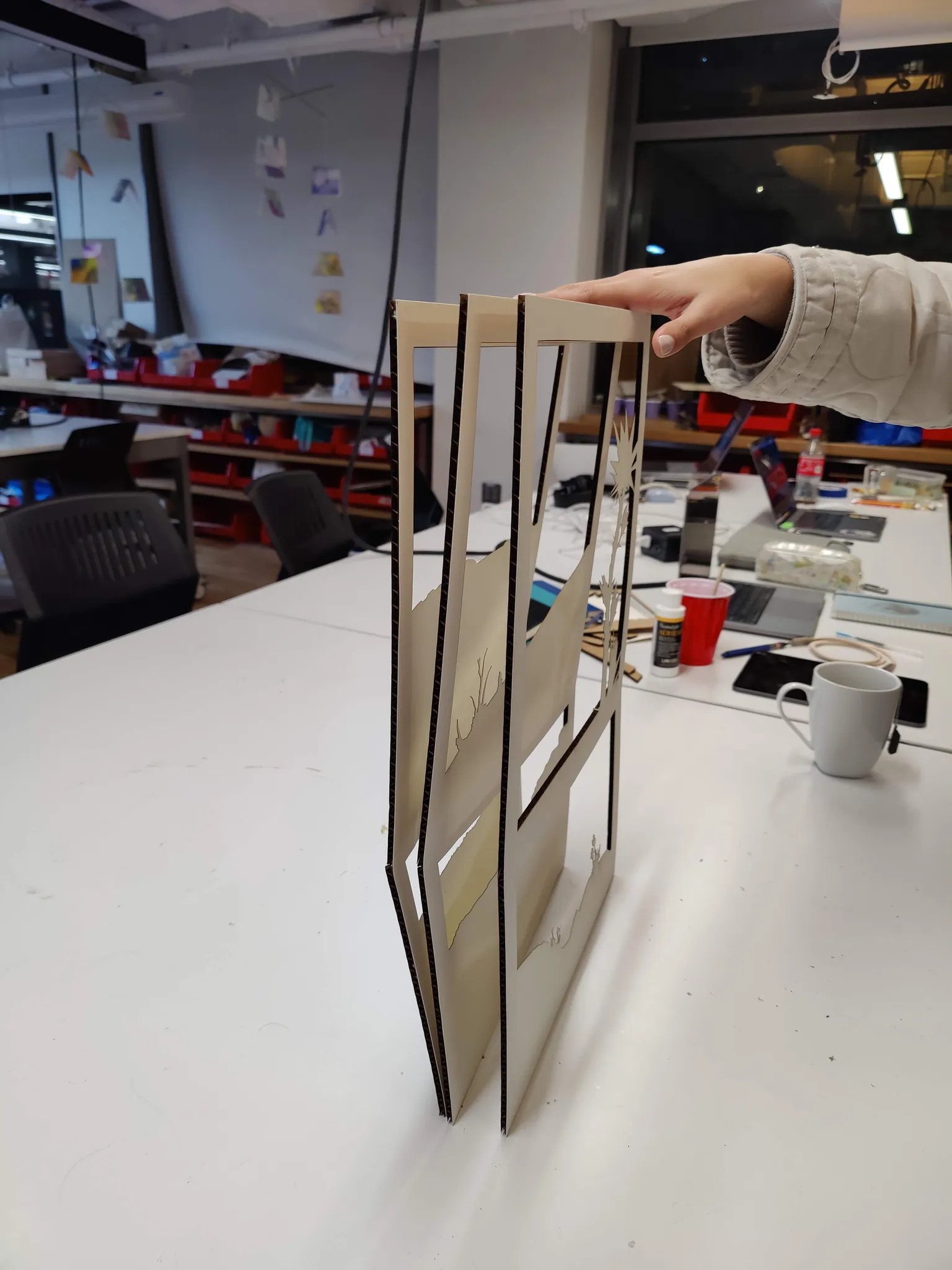
At some point we started going delirious at 2:00am and started making the book cover. I realized we mismeasured because a book's cover is actually larger than the pages within it, and my teammates weren't sure it was worth the effort to start over. At this point, we were seriously doubting our ability to make it look like a book at all.
Honestly though? It was worth the extra effort because it really does look like a book!
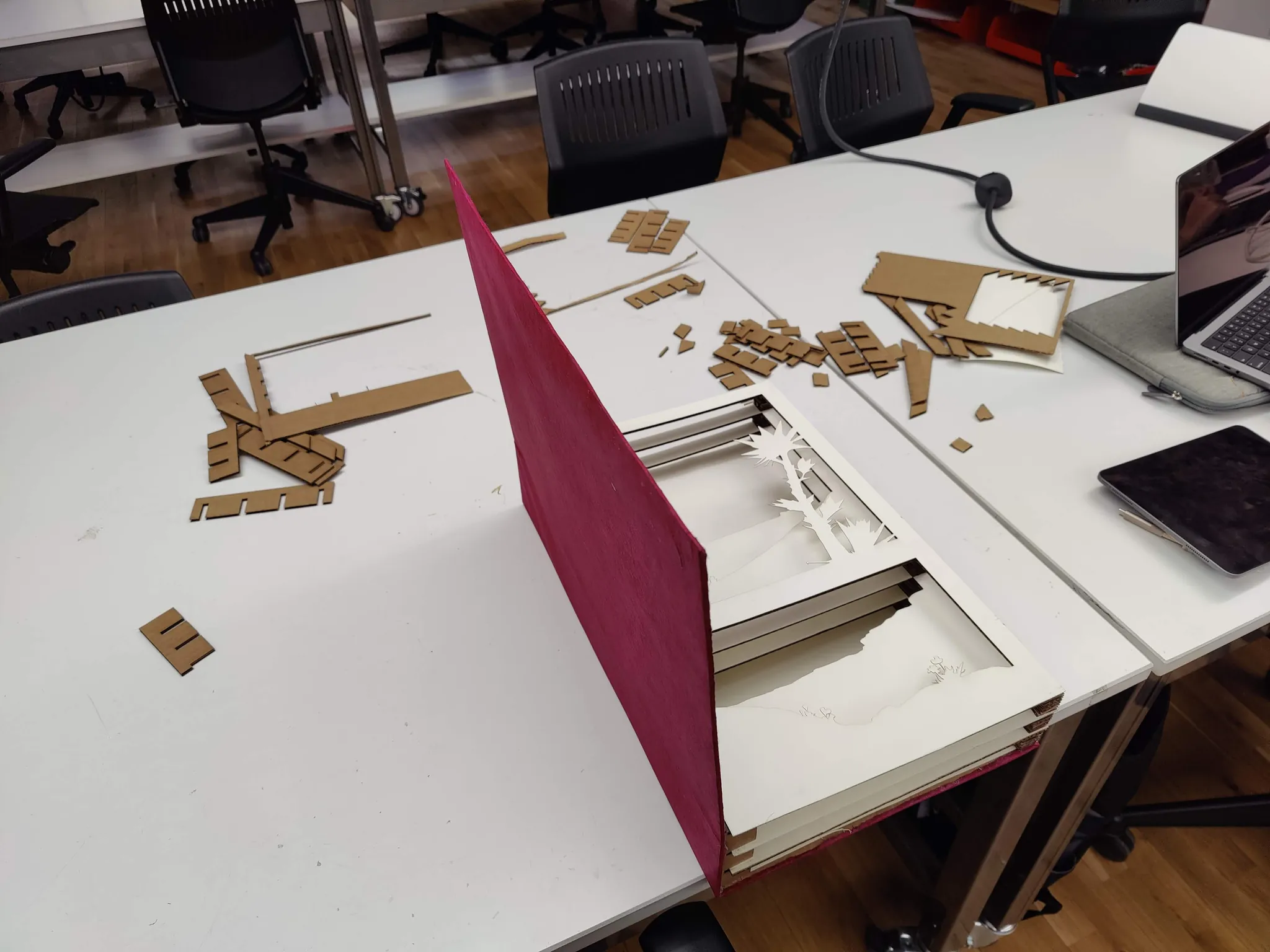
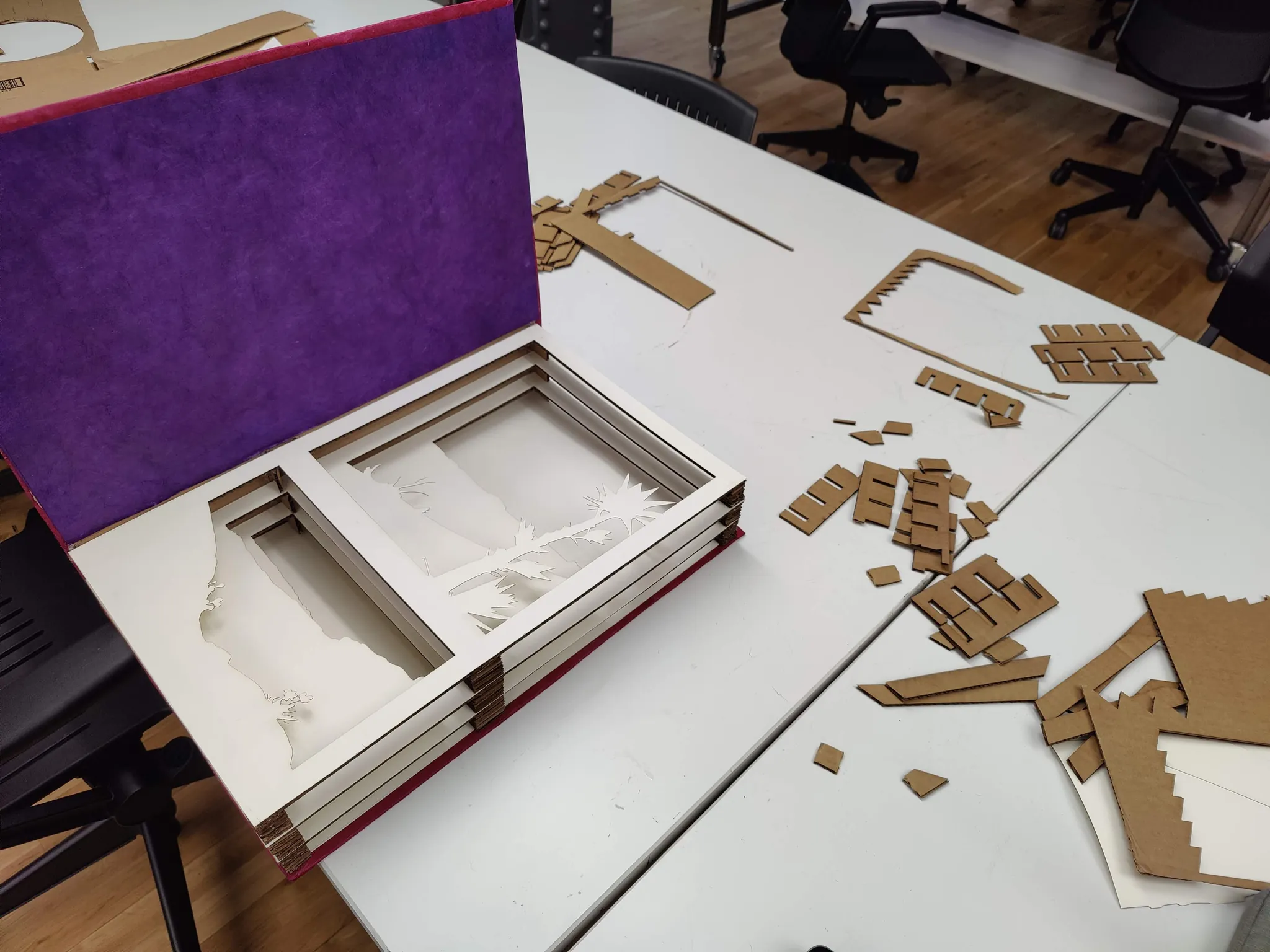
…I think it looks pretty book-like, no?
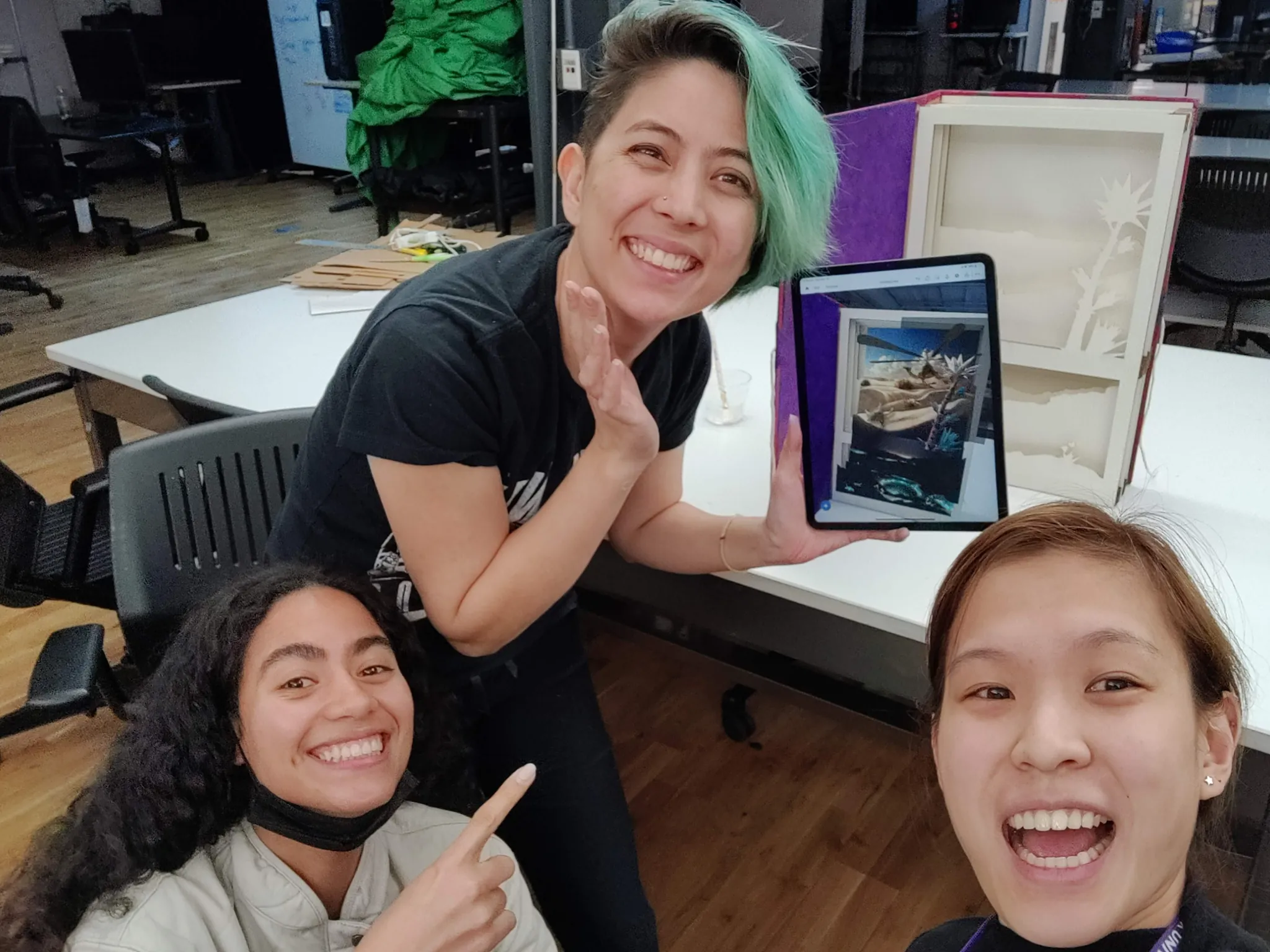
Late night success!
Playtesting
We had a playtesting session in our class, through which we got valuable feedback. Of course, we're biased to love the "oo's" and "ahh's" more than the critical feedback!
Because we had several colors of recycled paper, we decided to use the other colors for decoration, including lining the inside and adding a rope to tie it closed.
Documentation Lab
The efforts didn't stop at the playtest!
At the suggestion of our classmates, we brought our book to the documentation lab and got these beautiful shots.

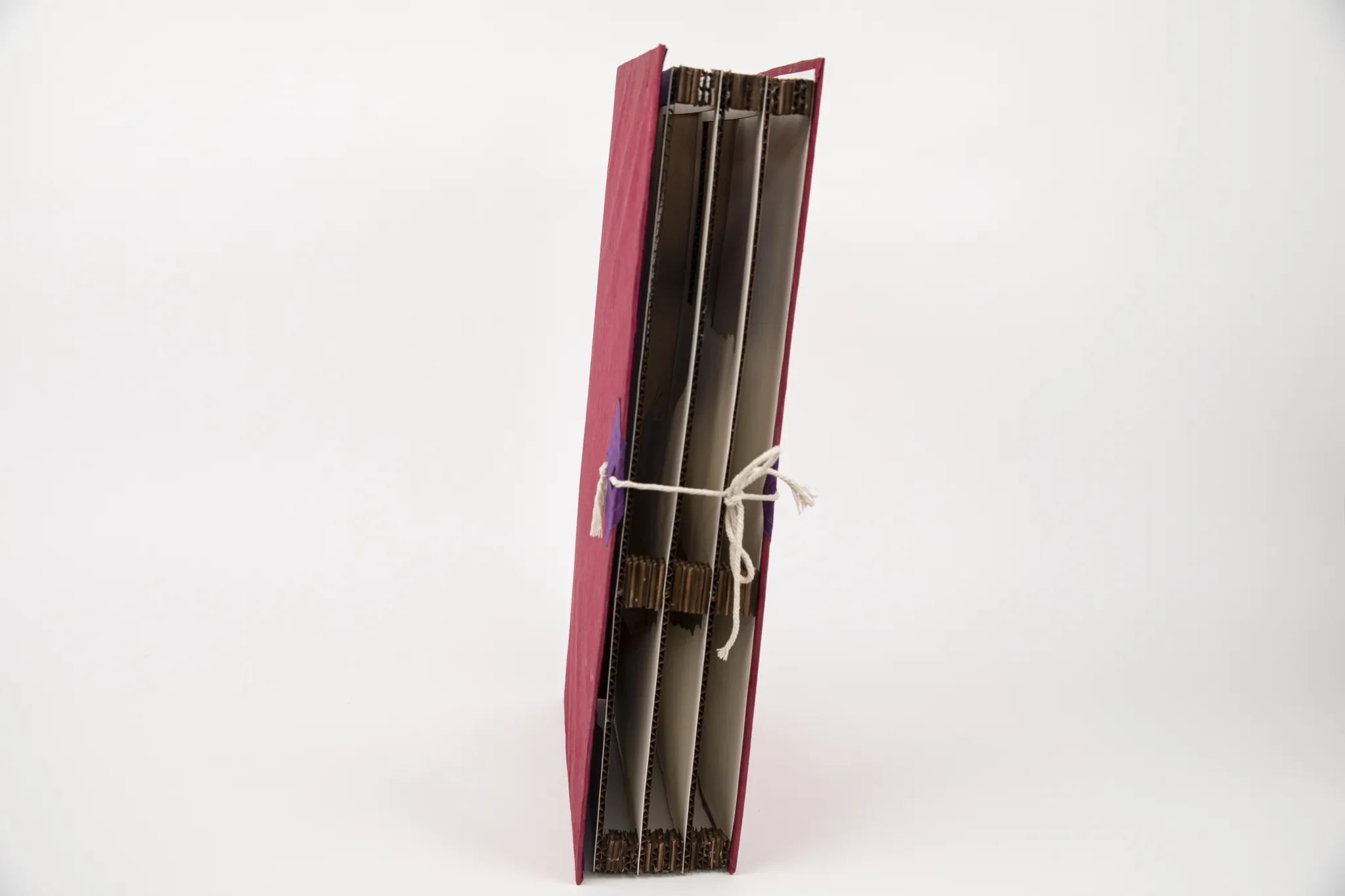
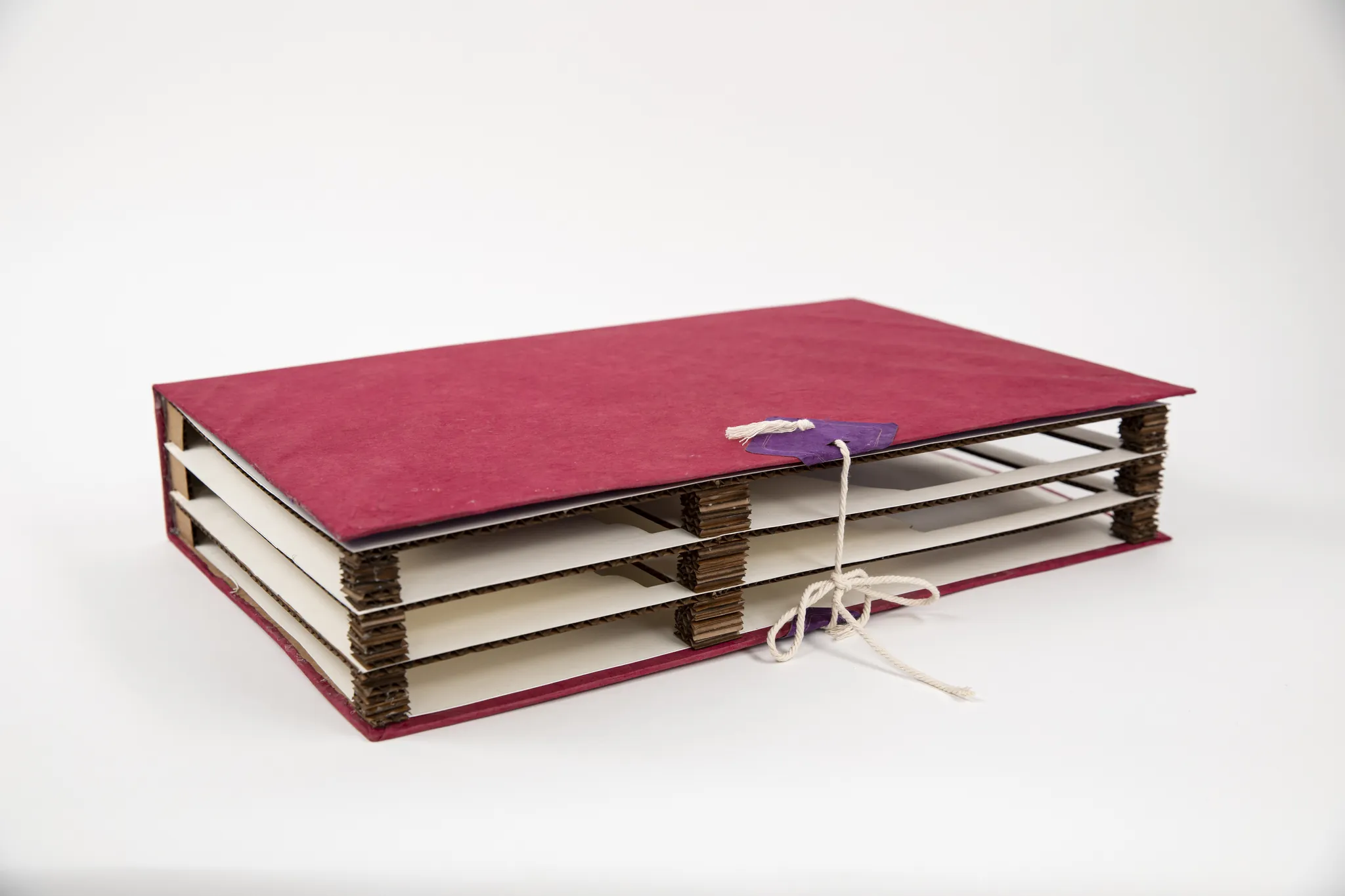
The #1 thing we learned from this experience is that Alfonssette has the most beautiful hands

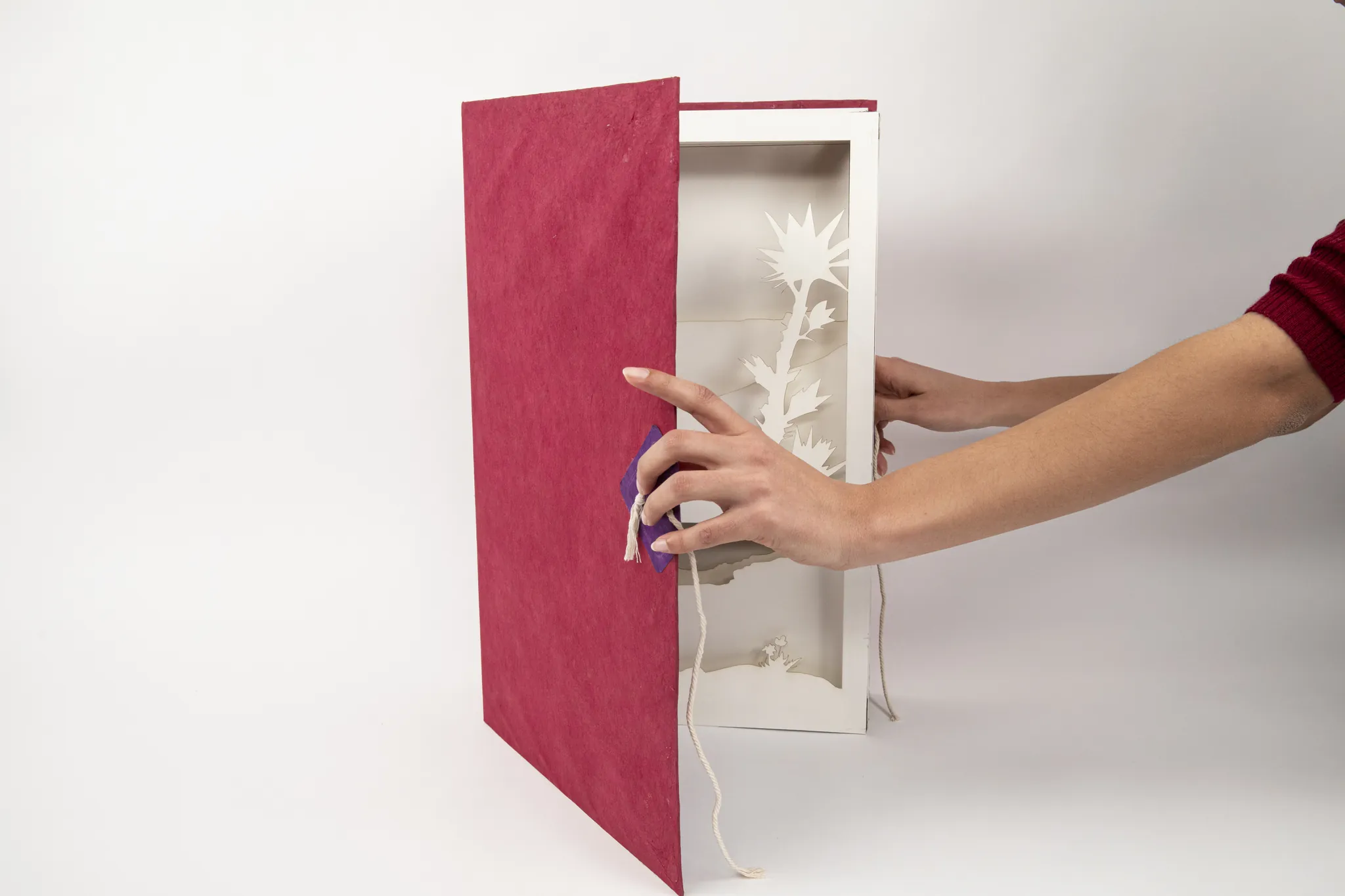
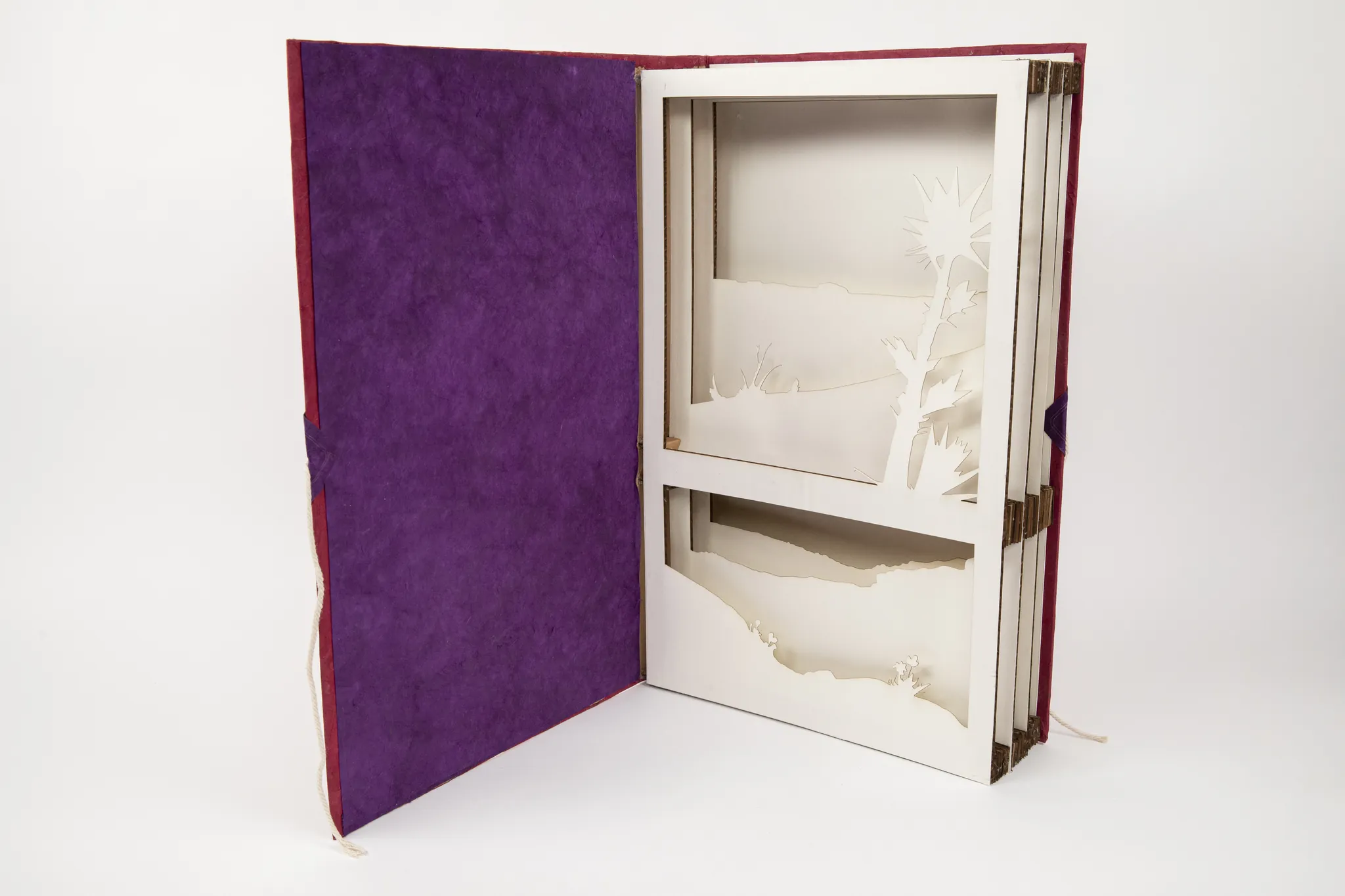

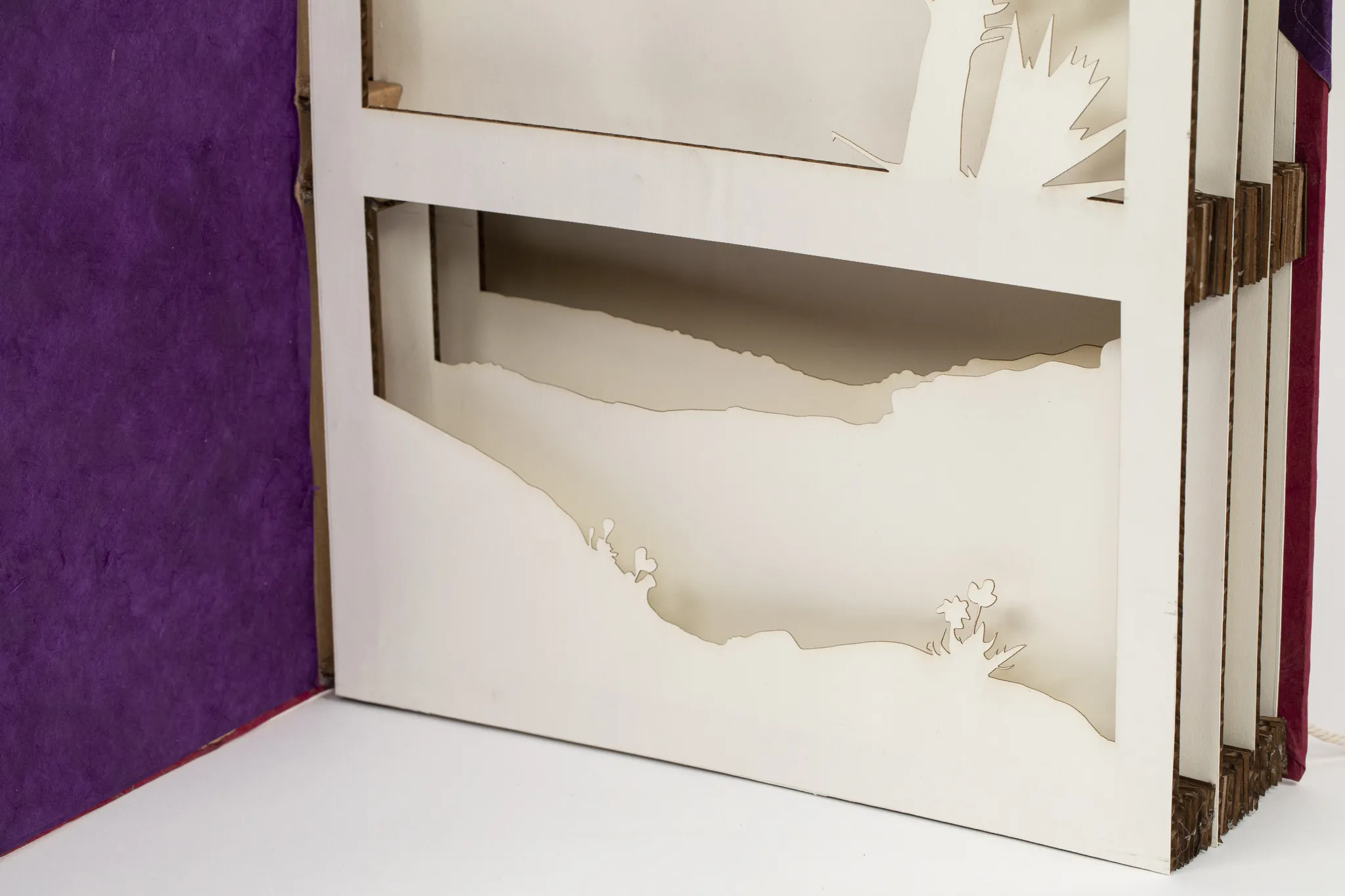
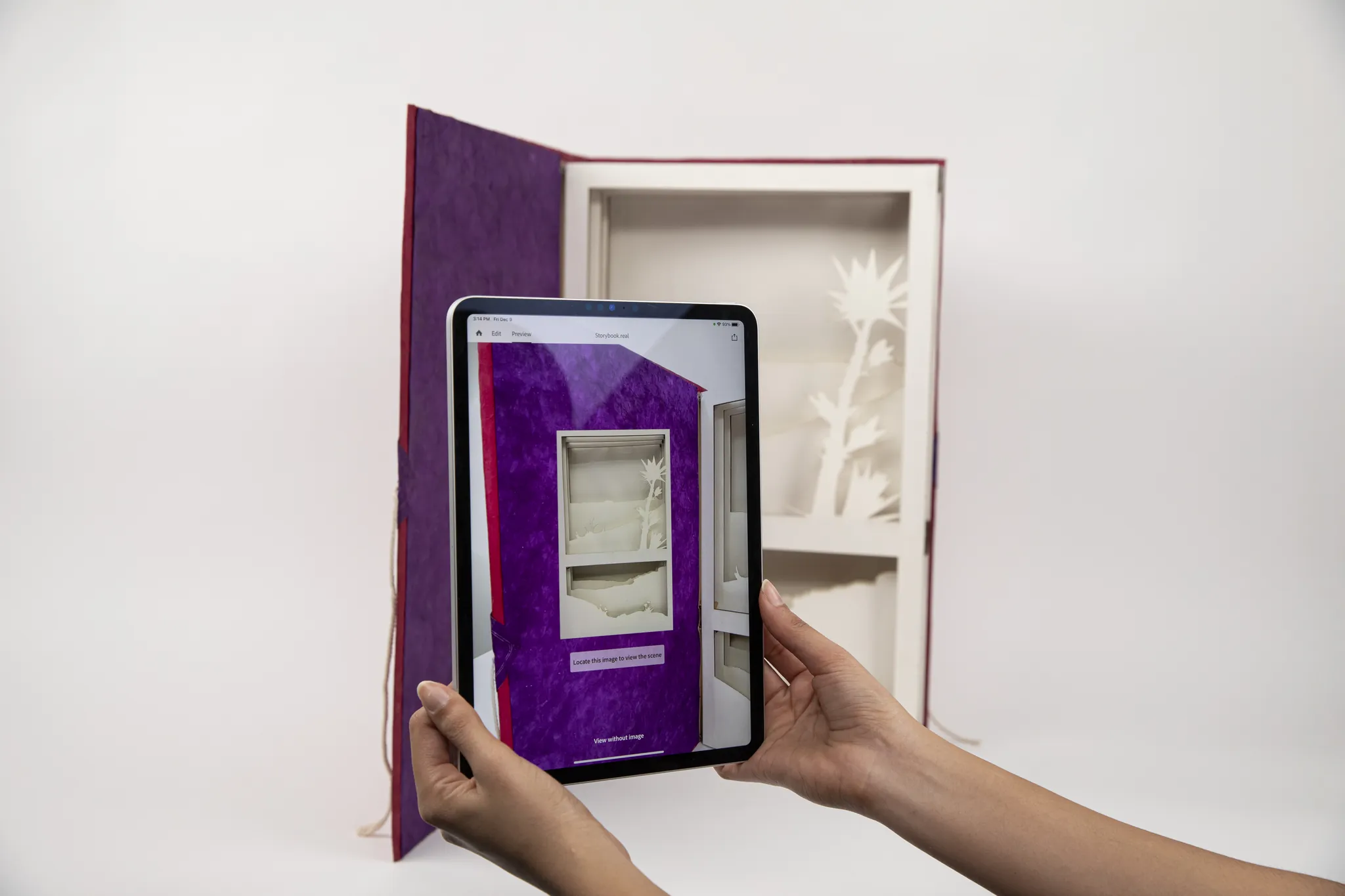

Lastly, we also showed our project at the ITP Winter Showcase.